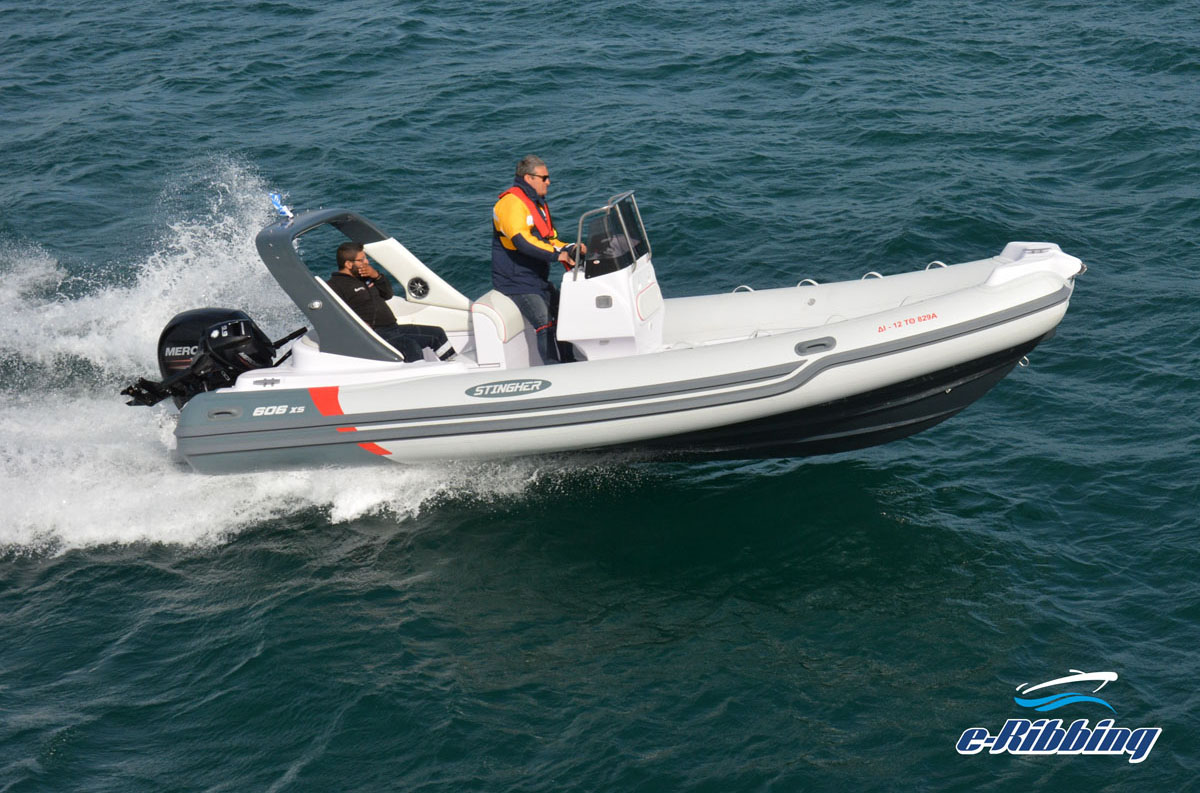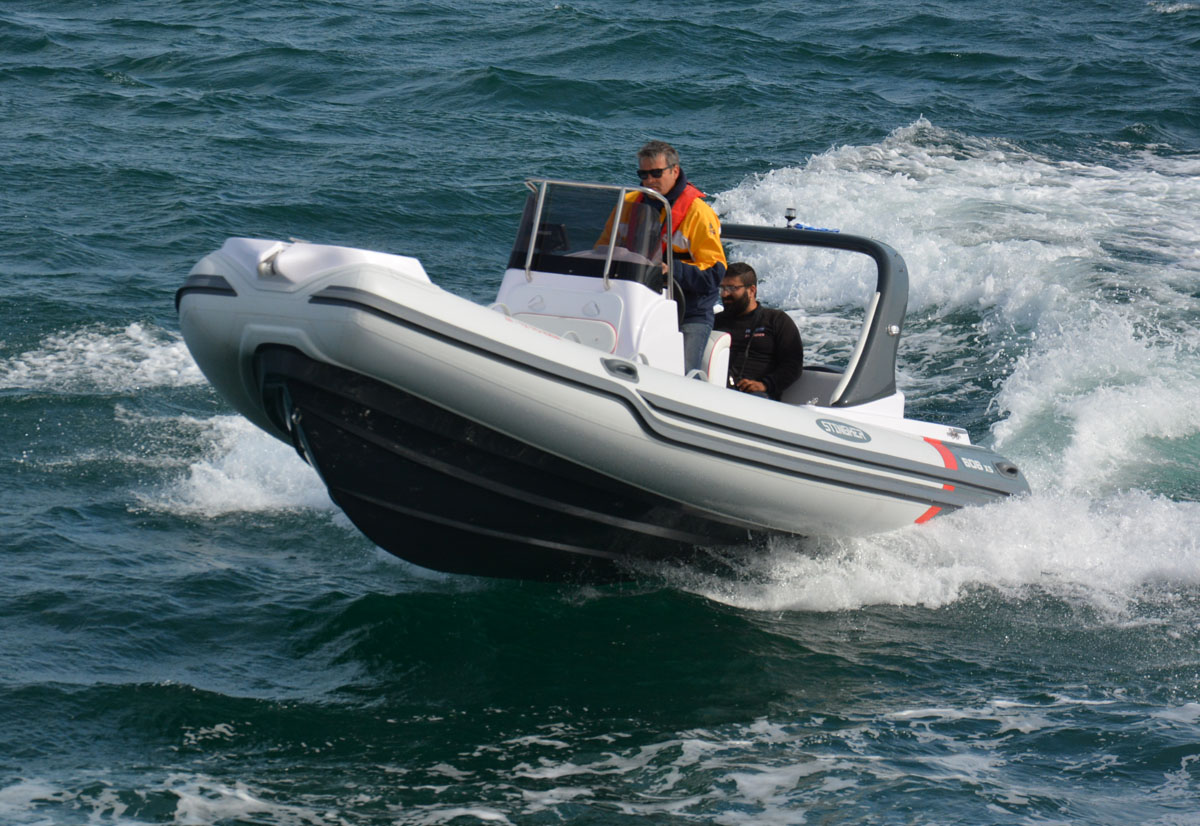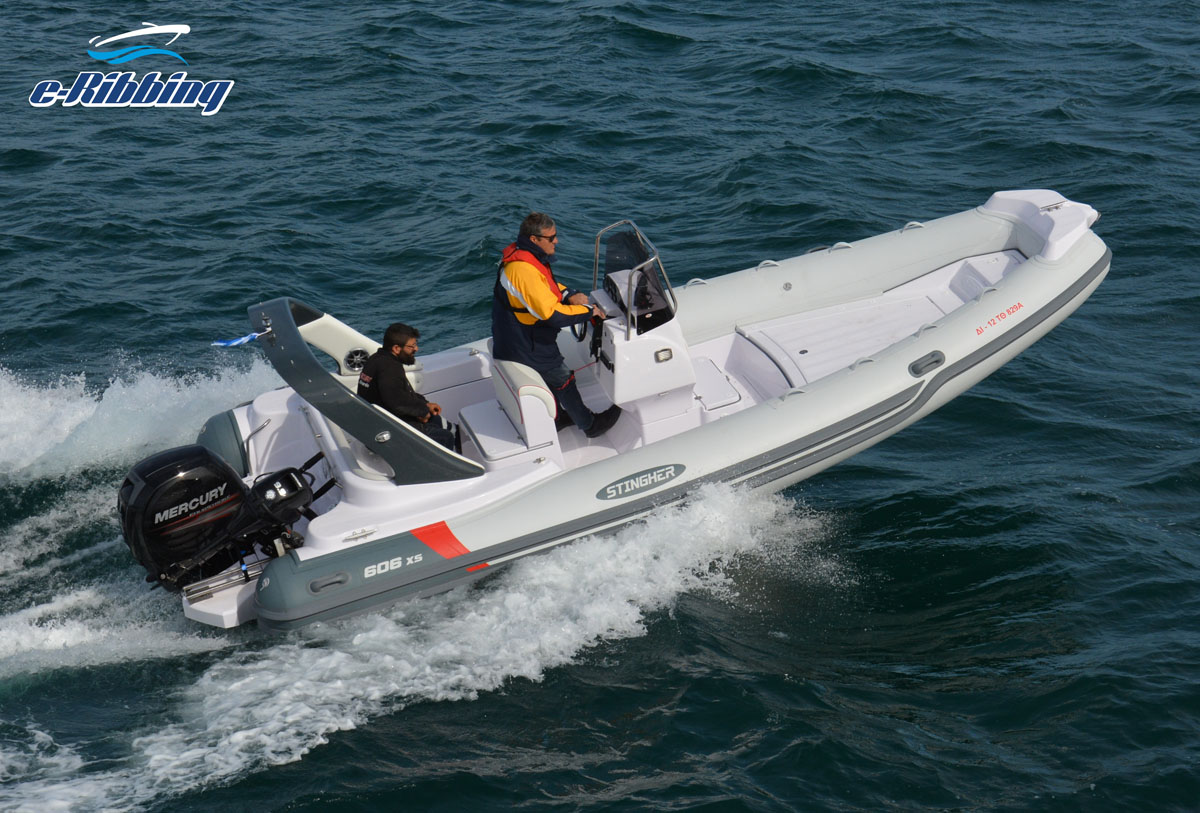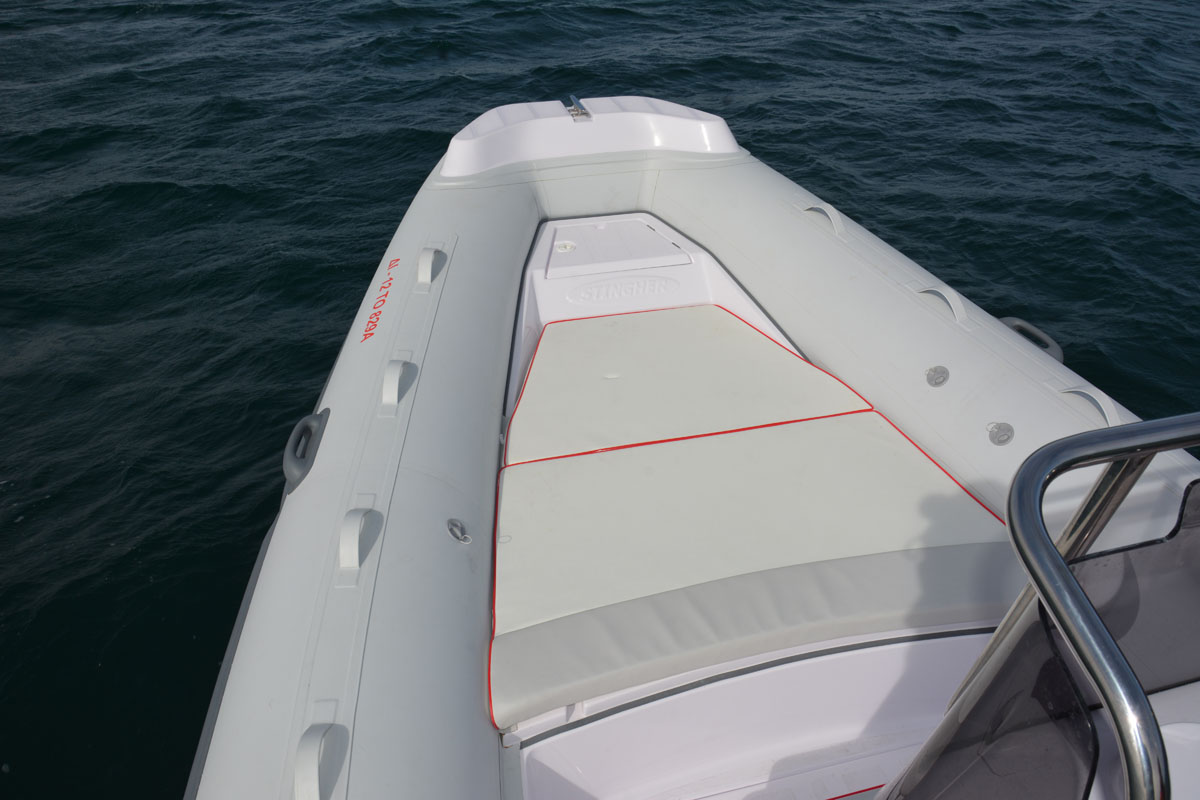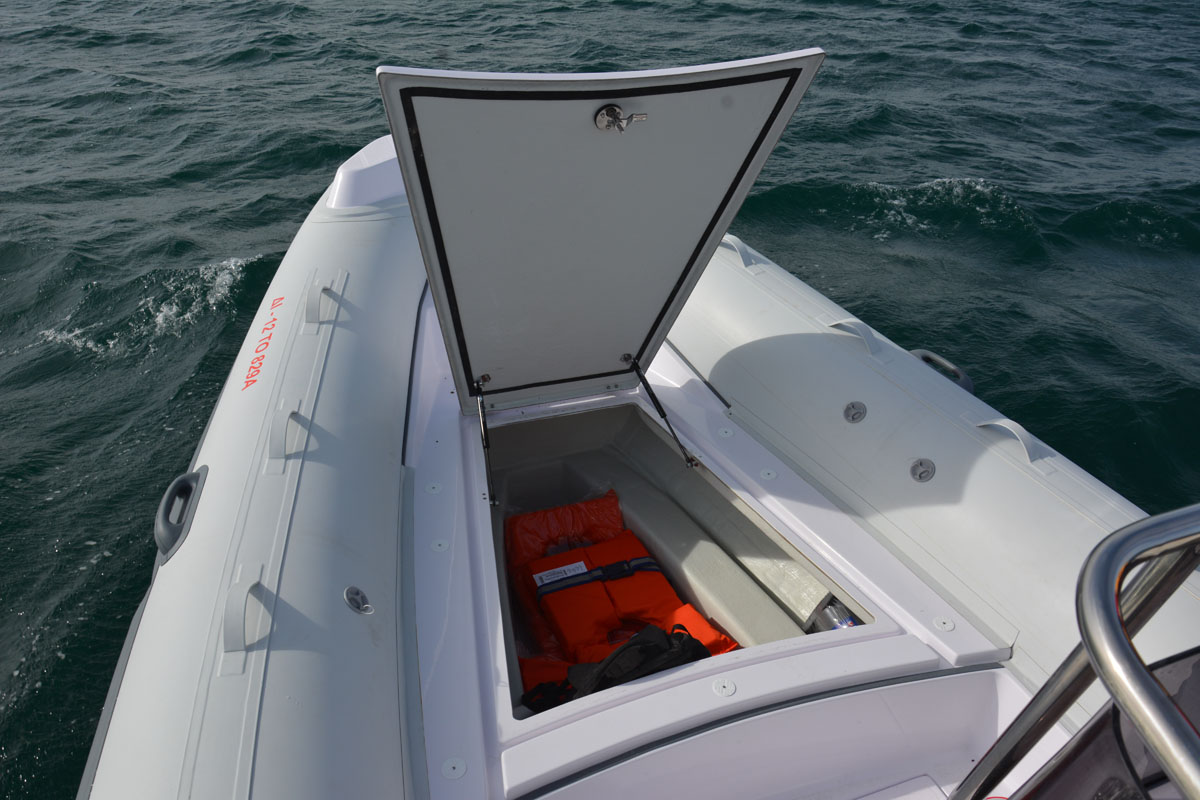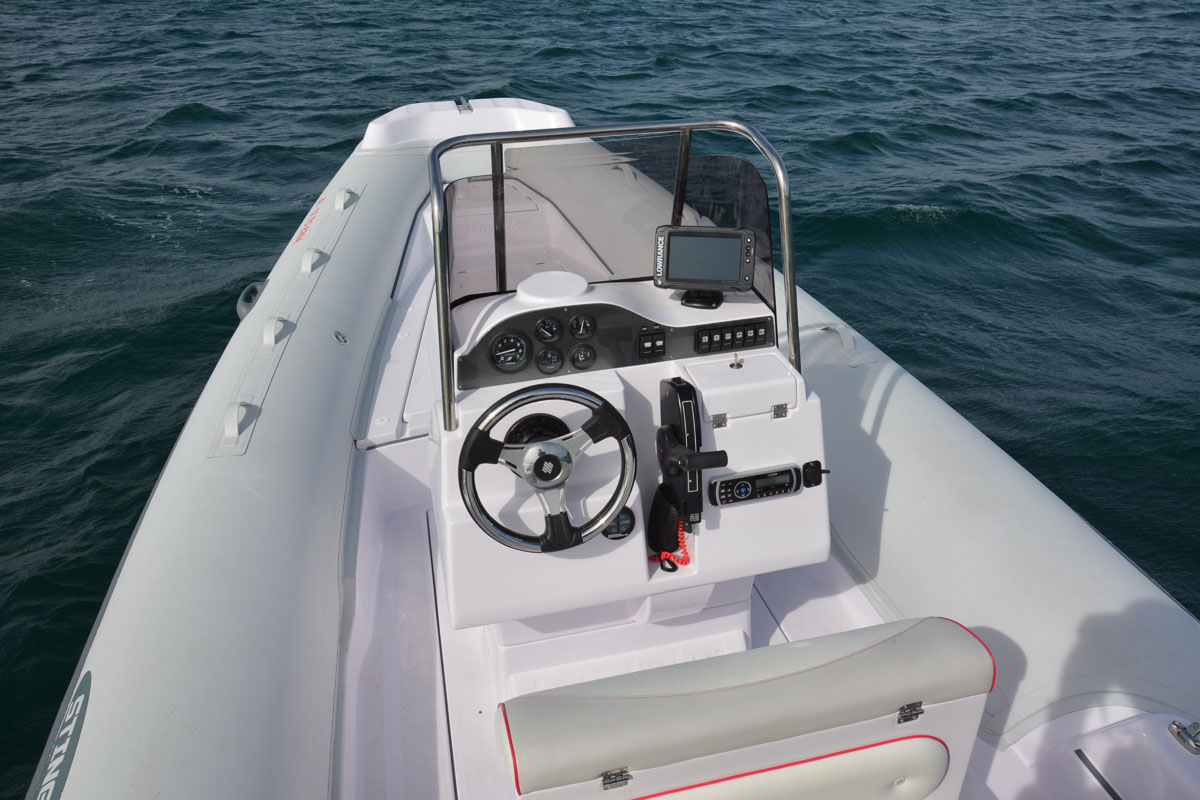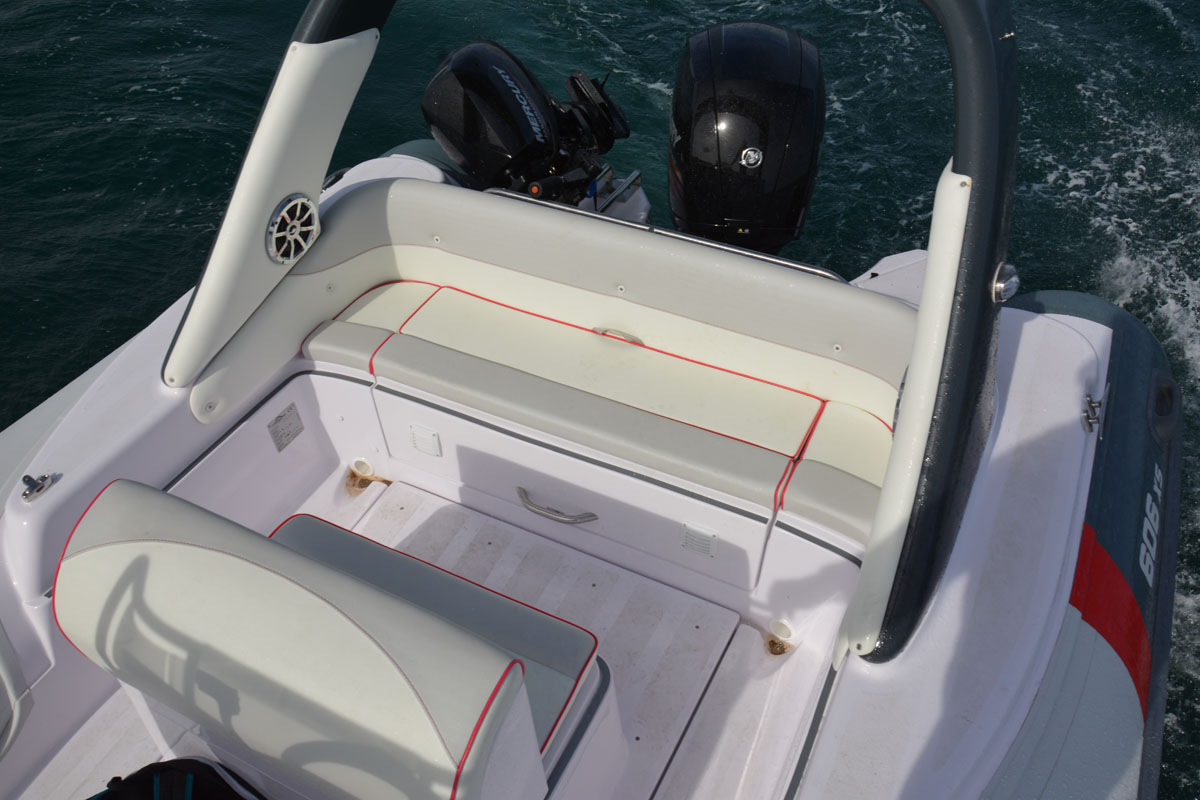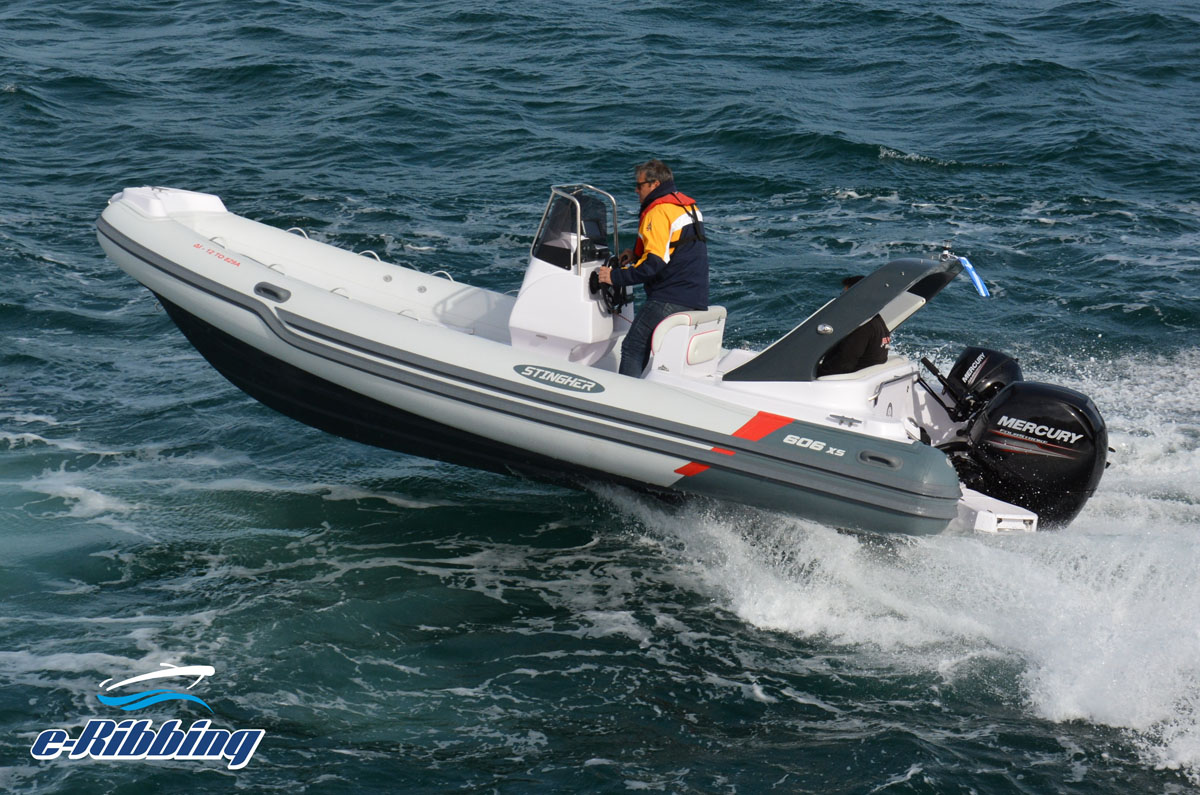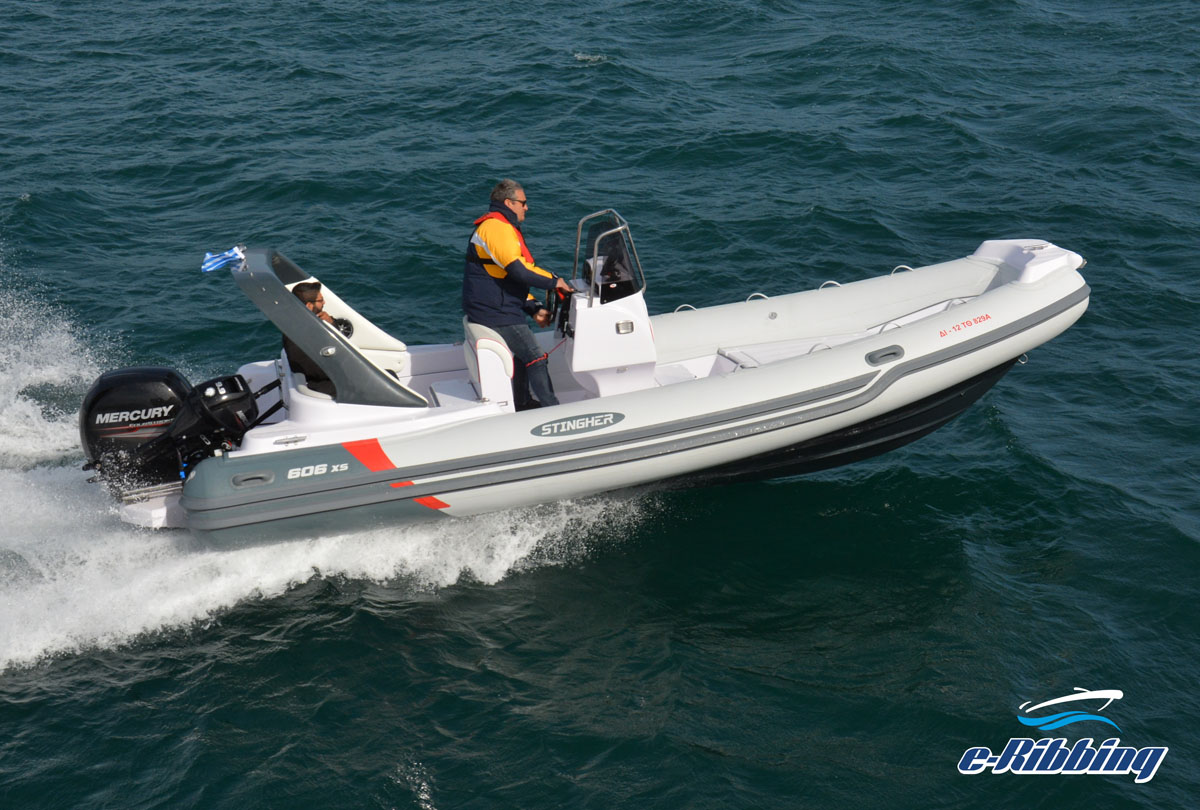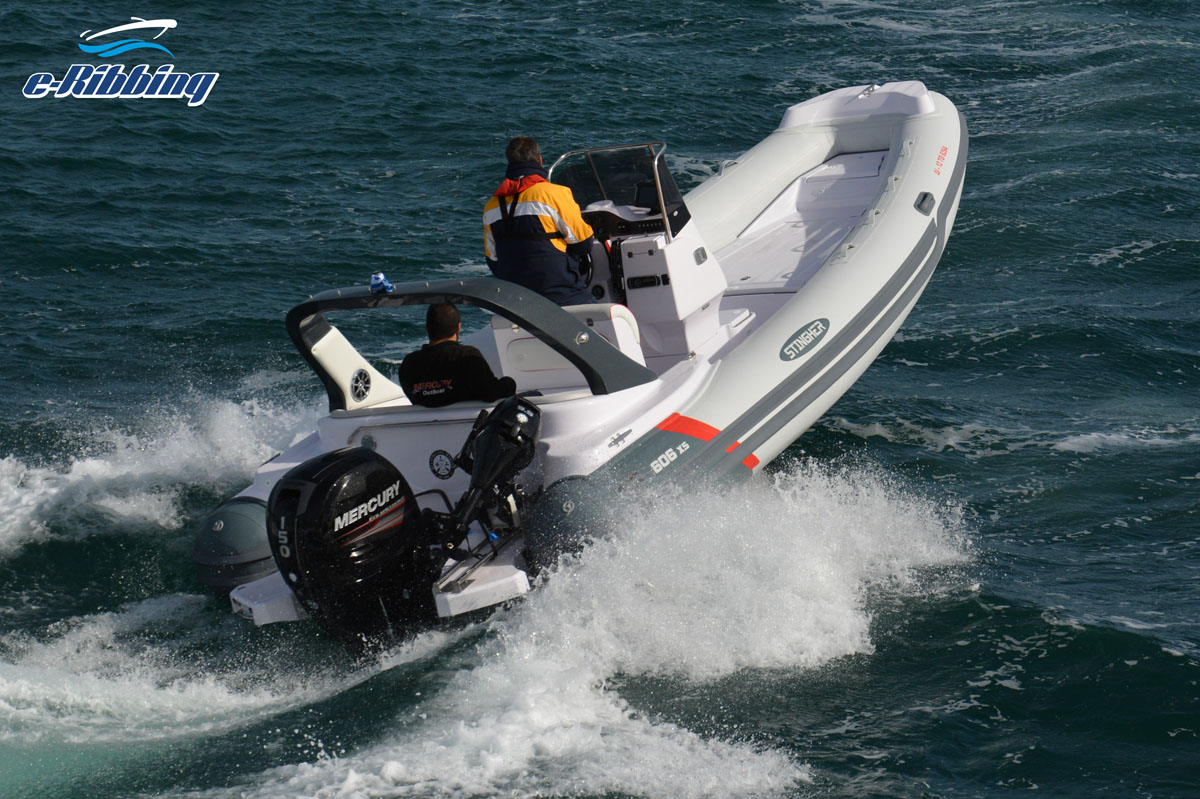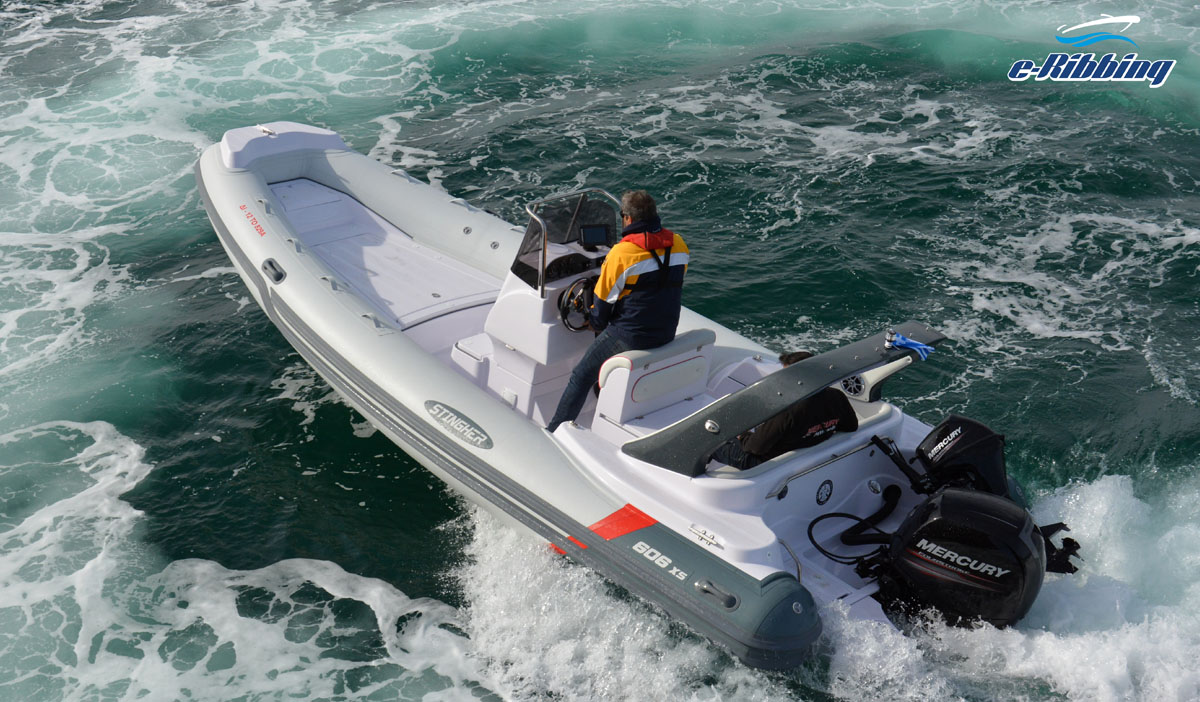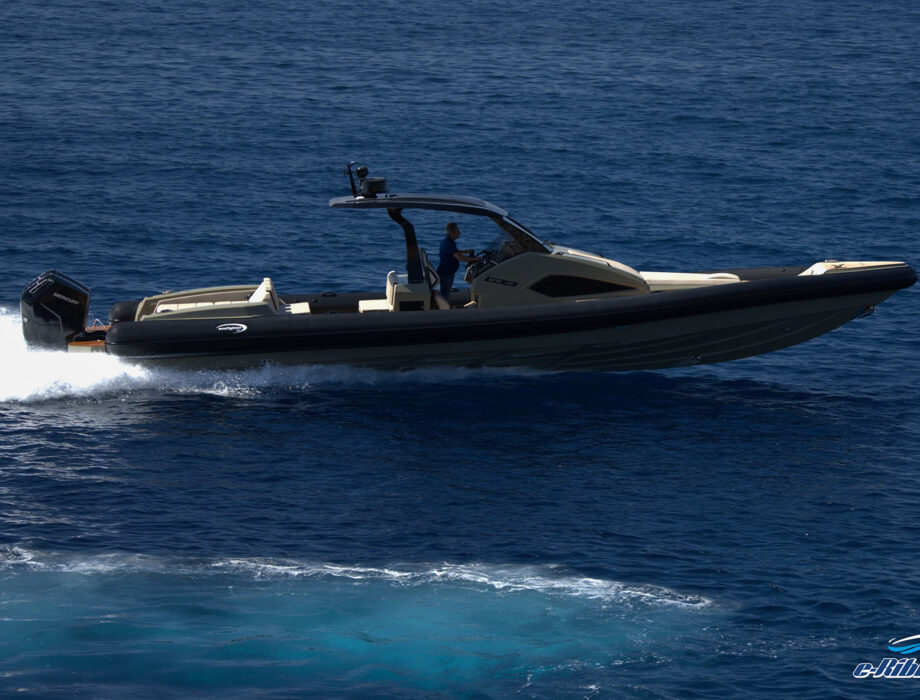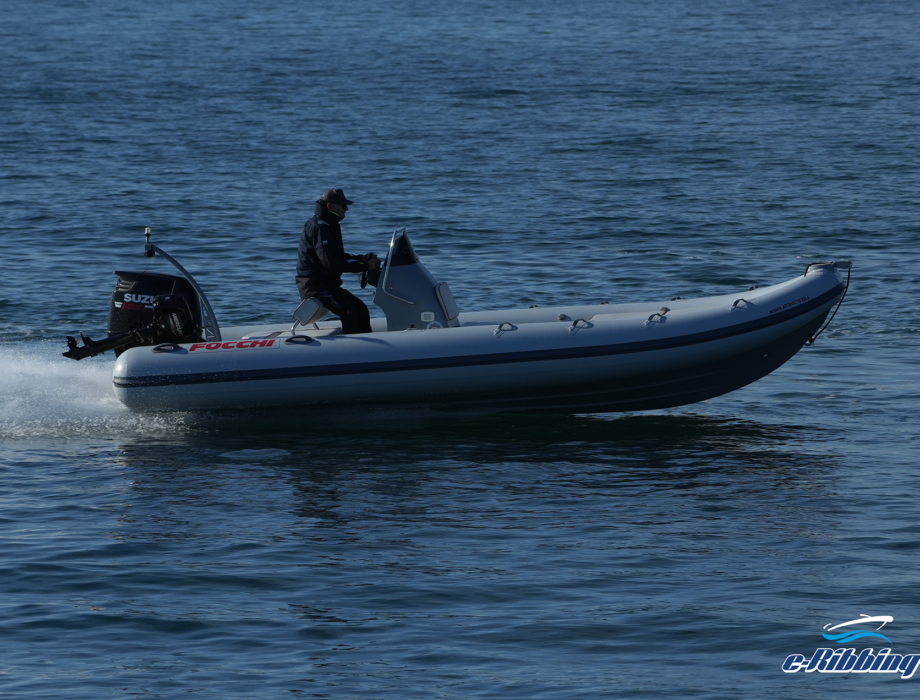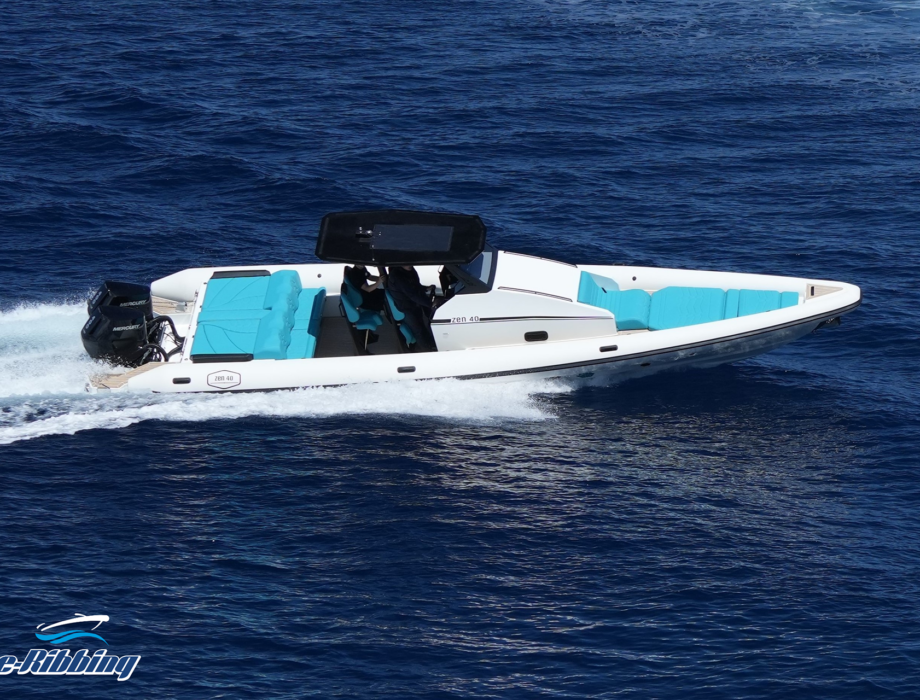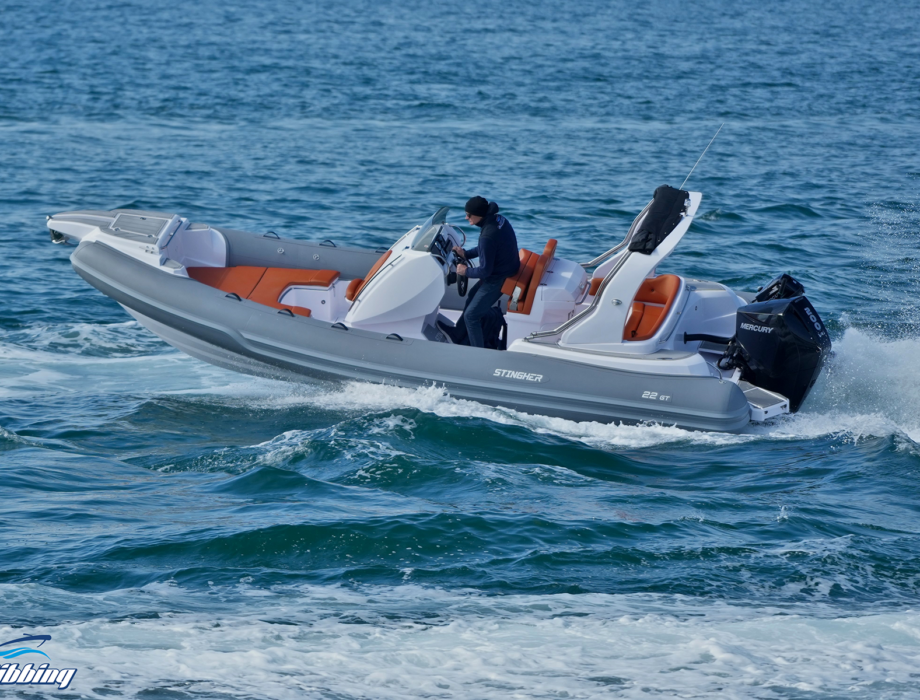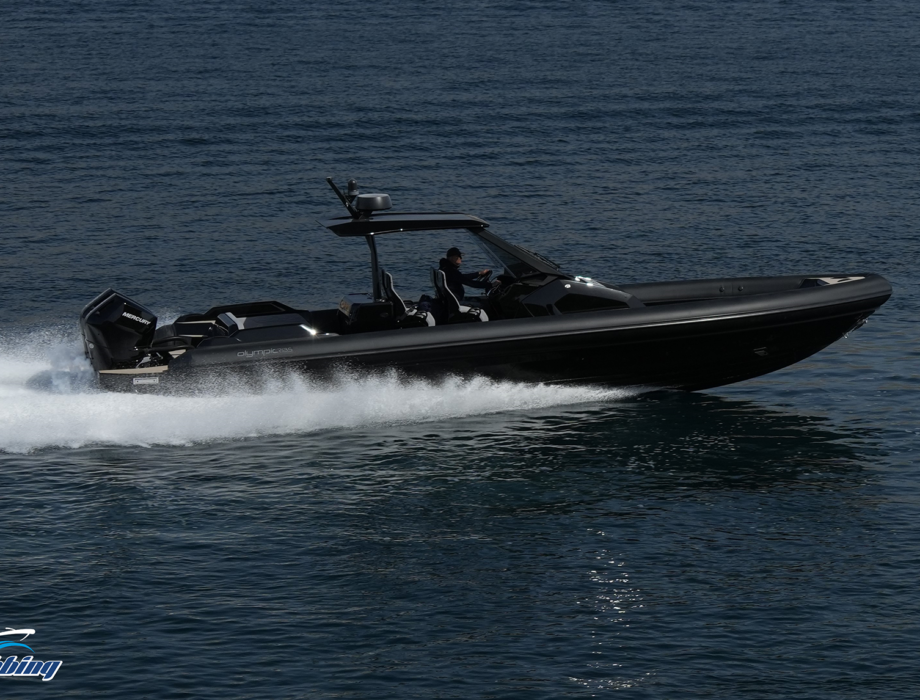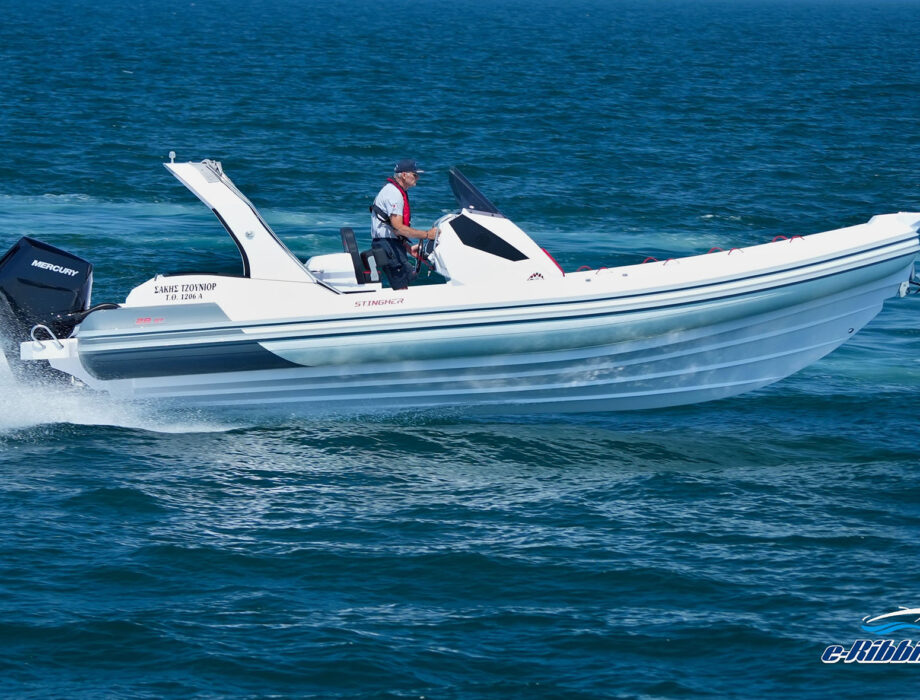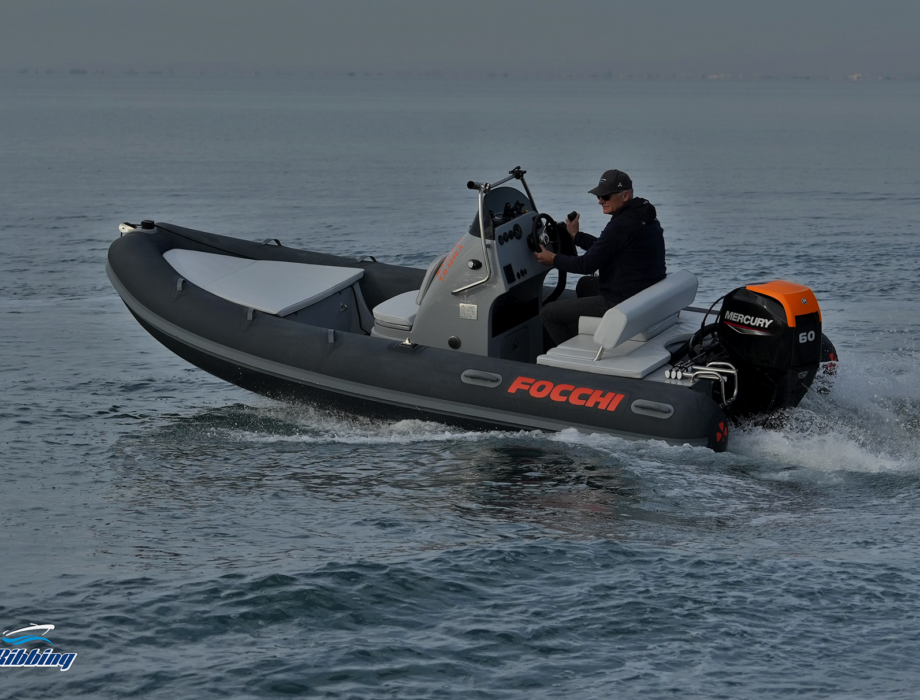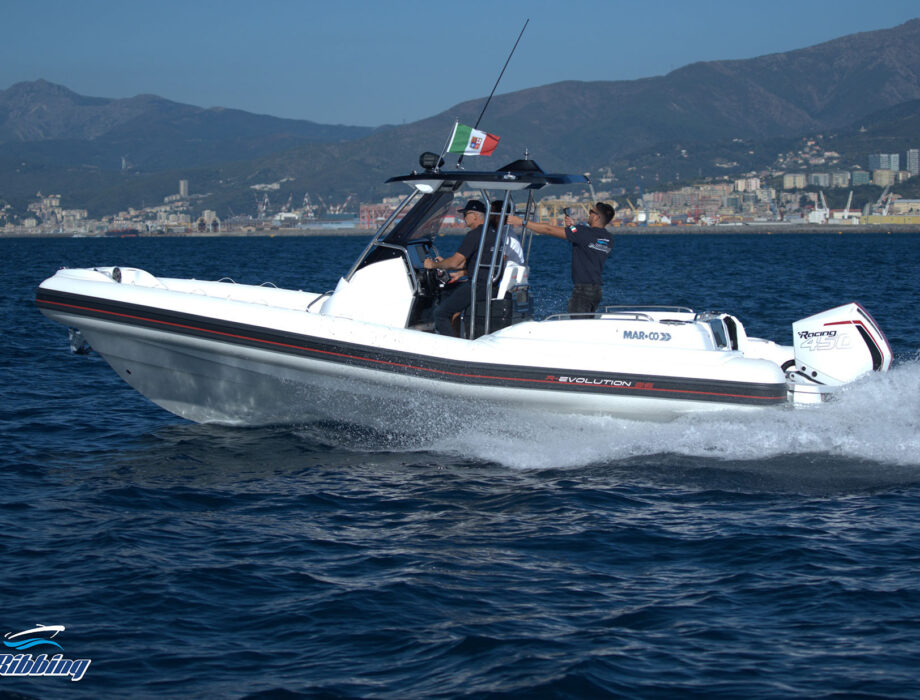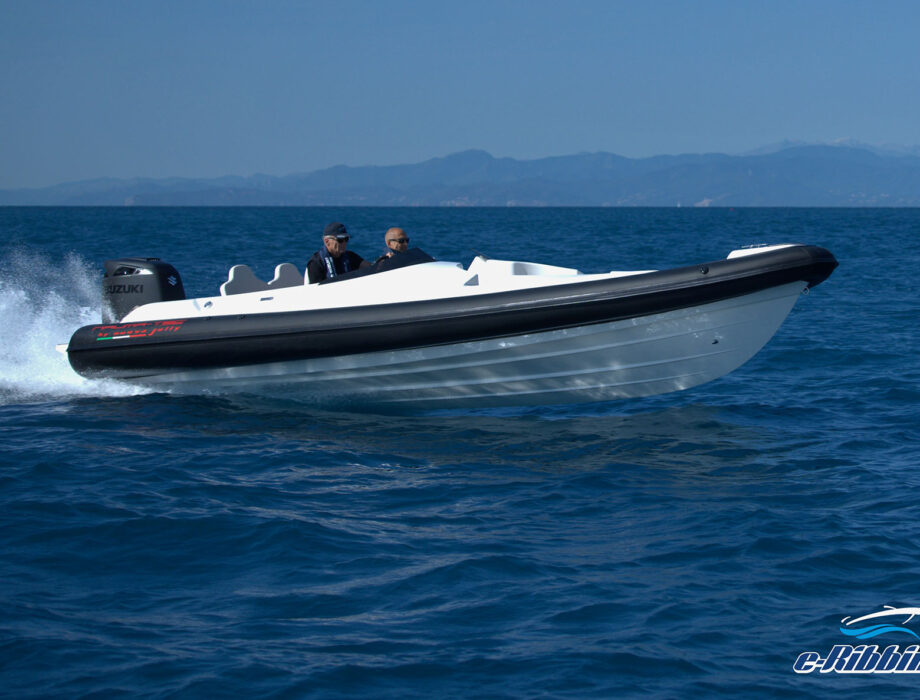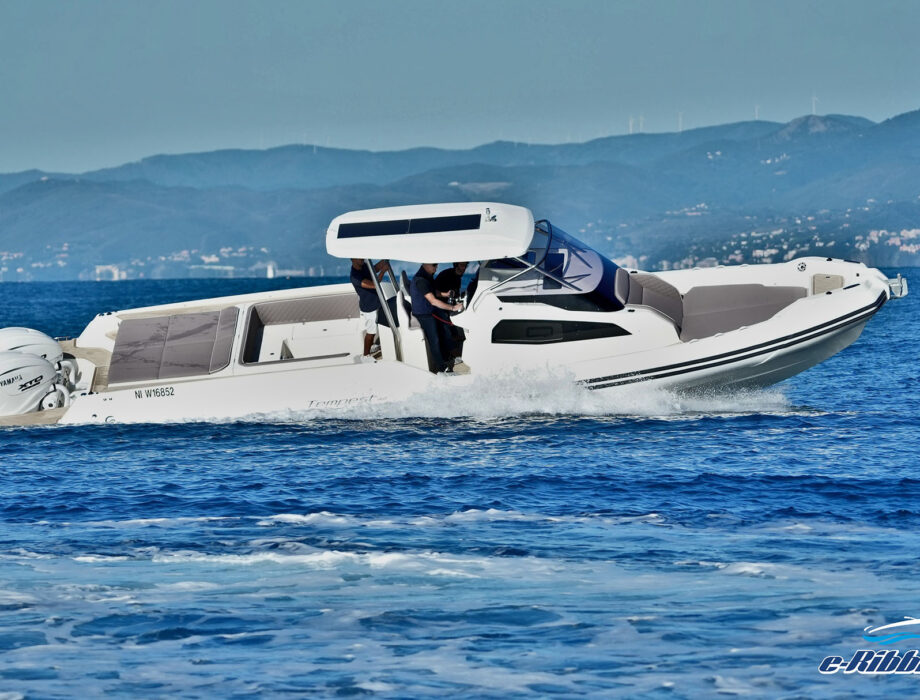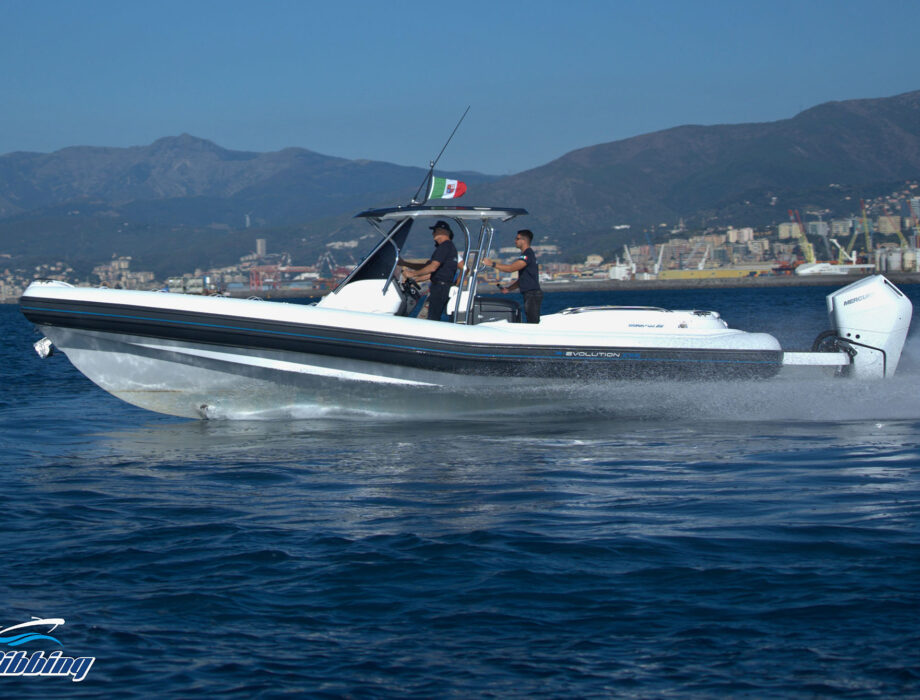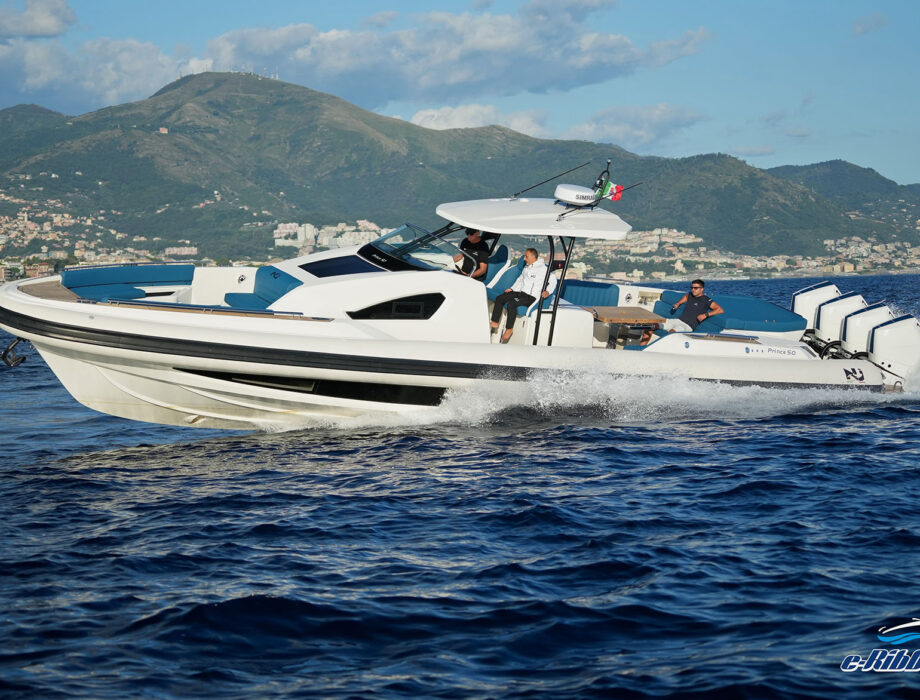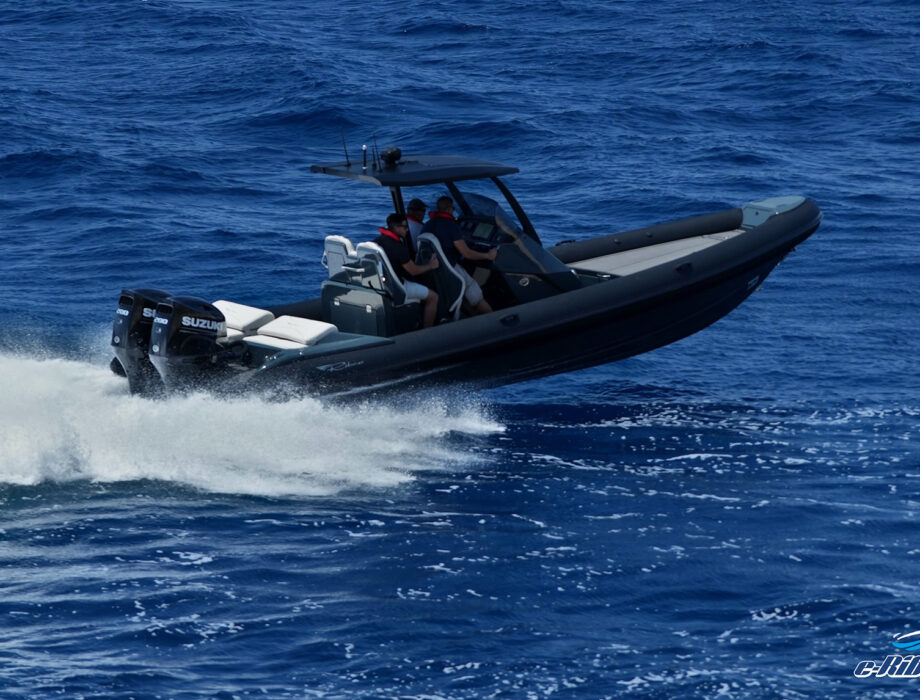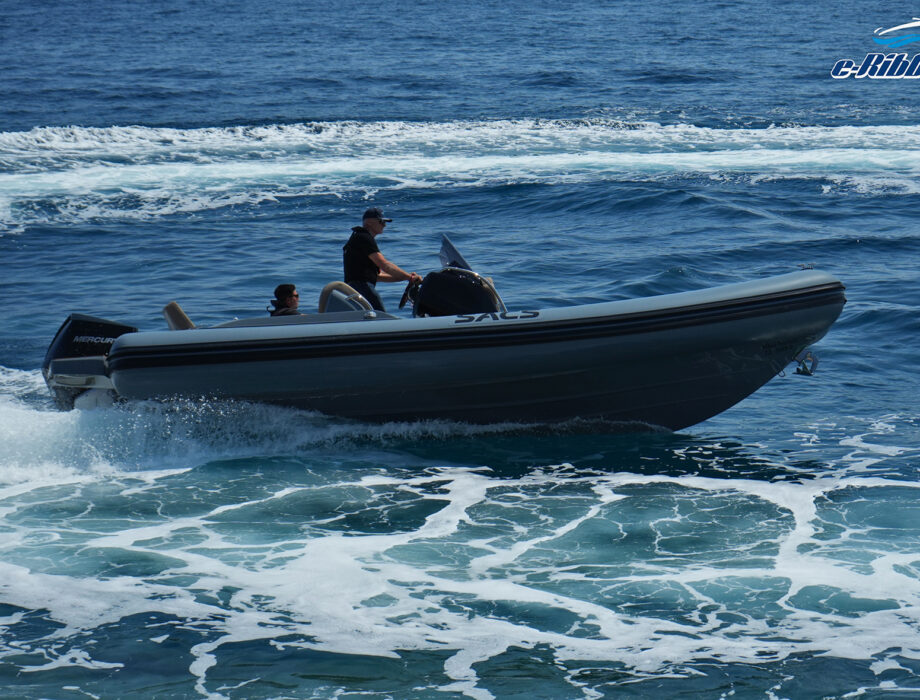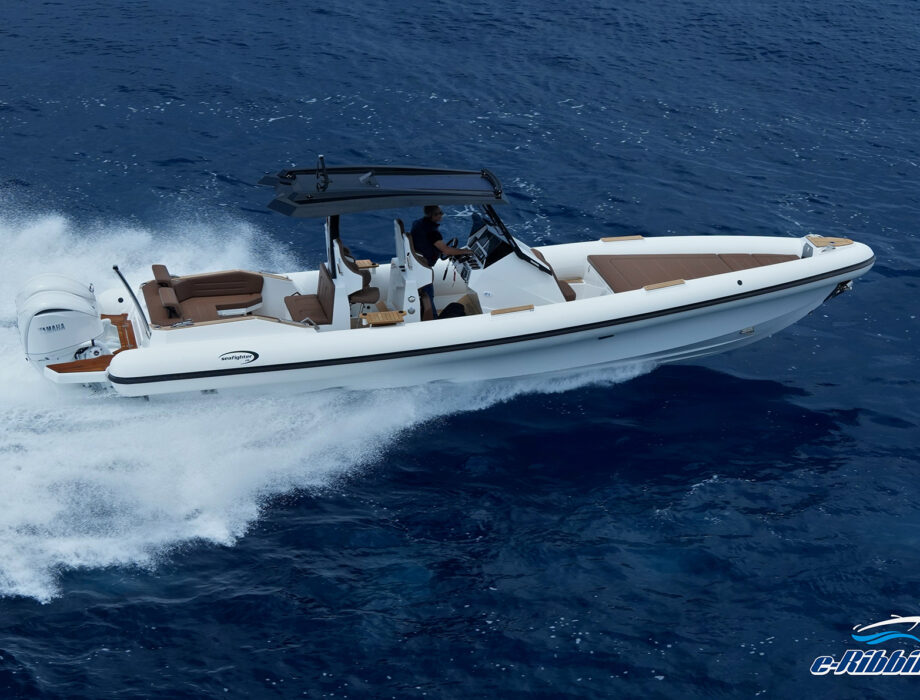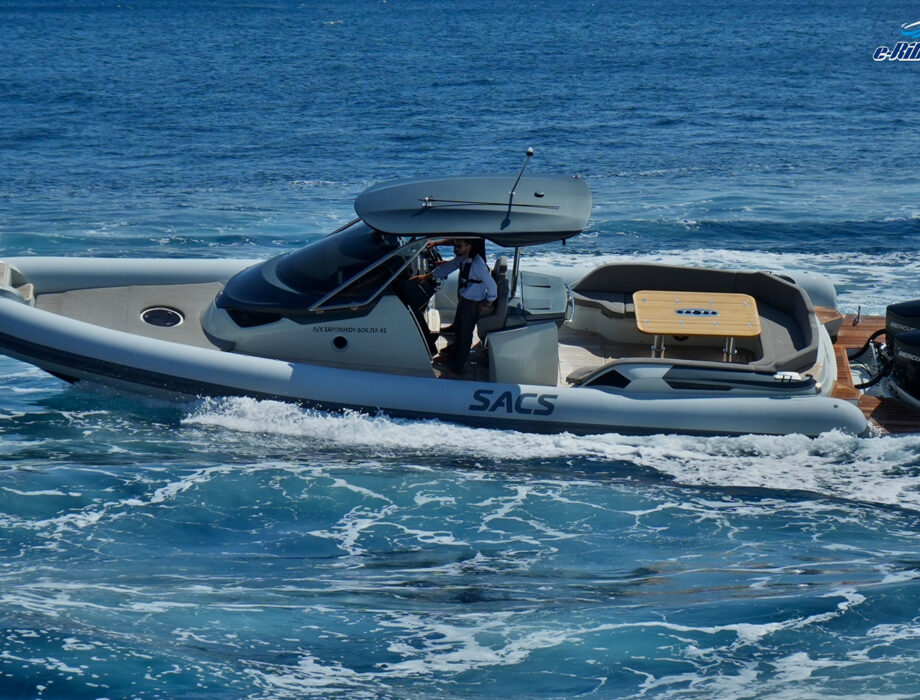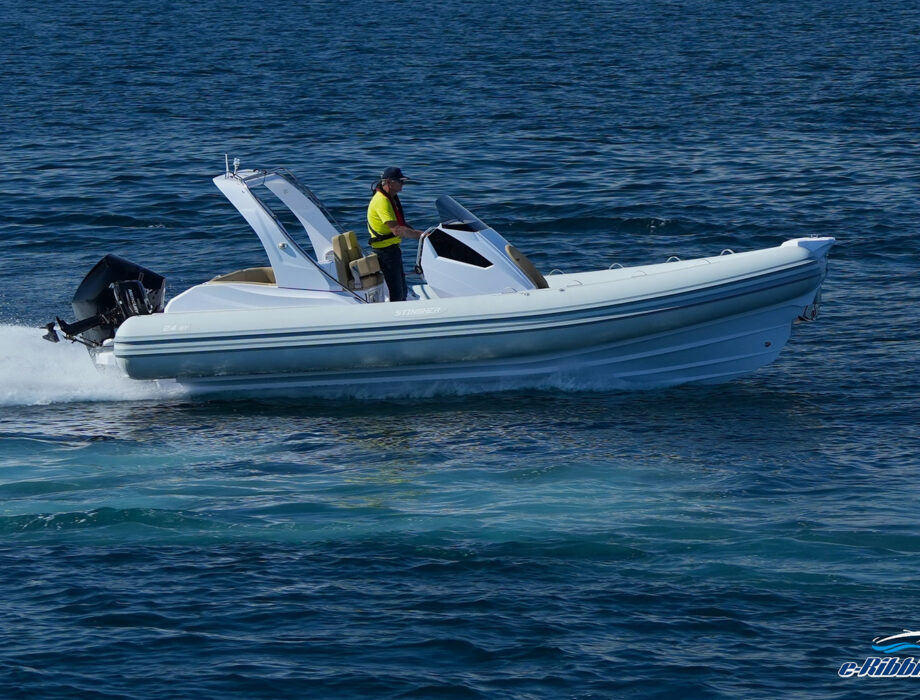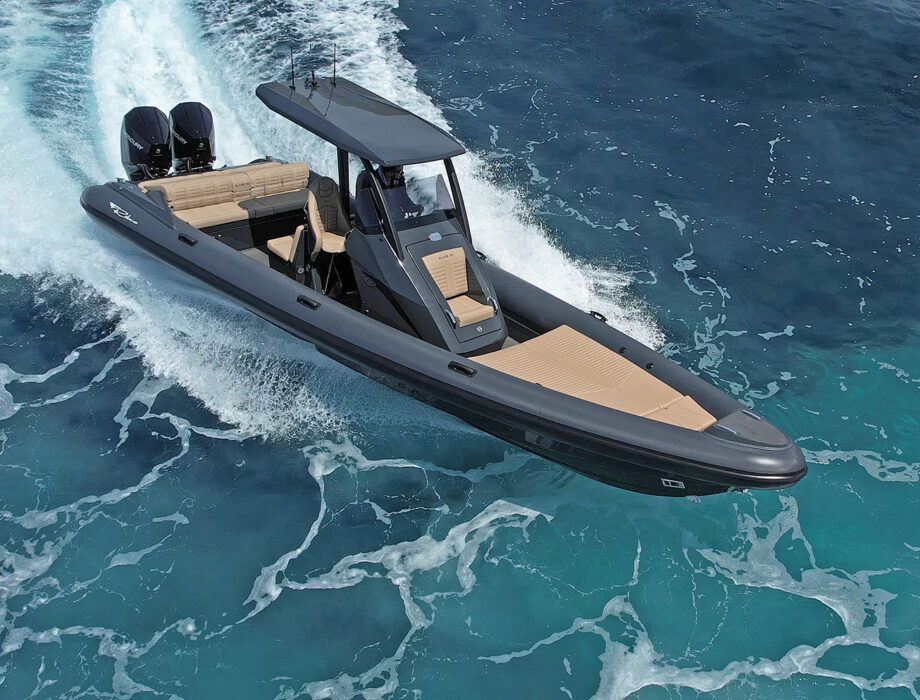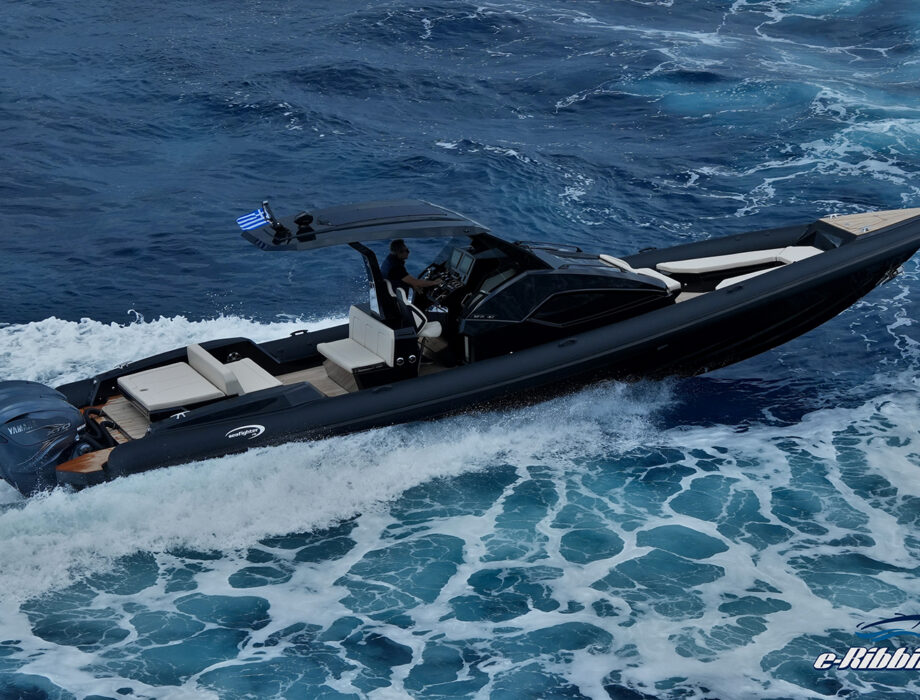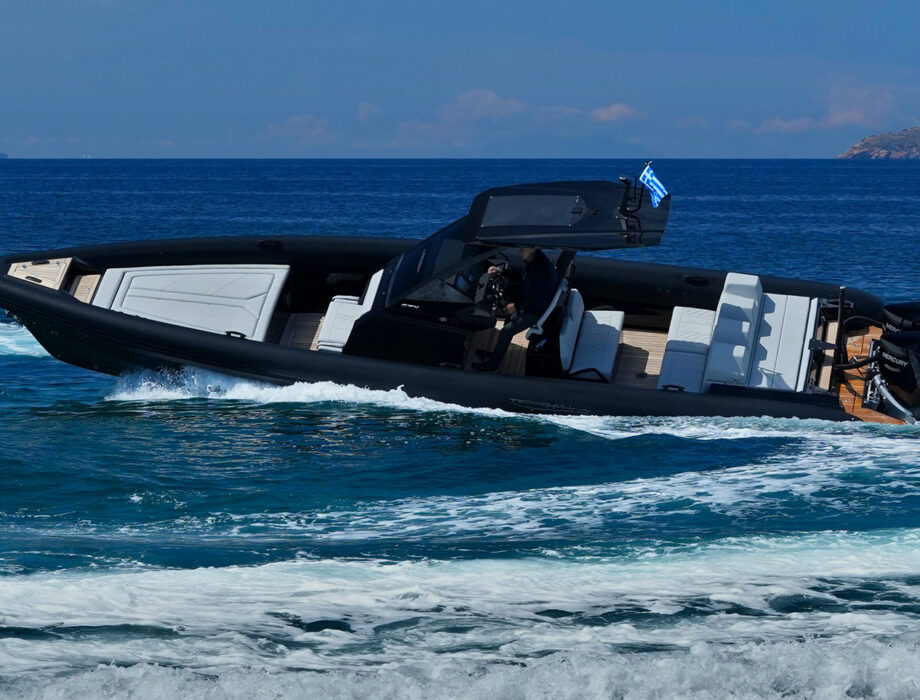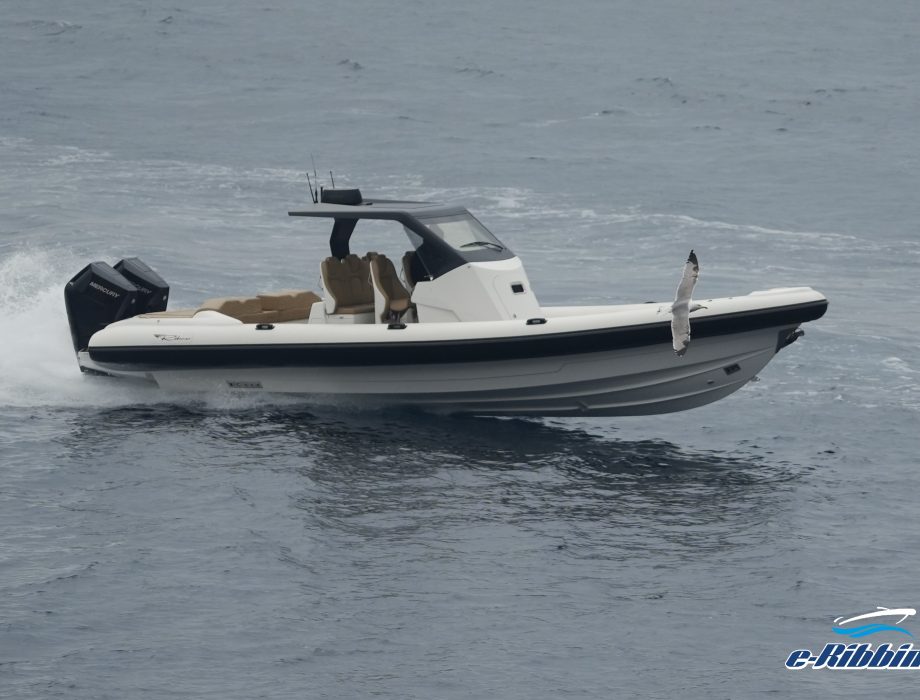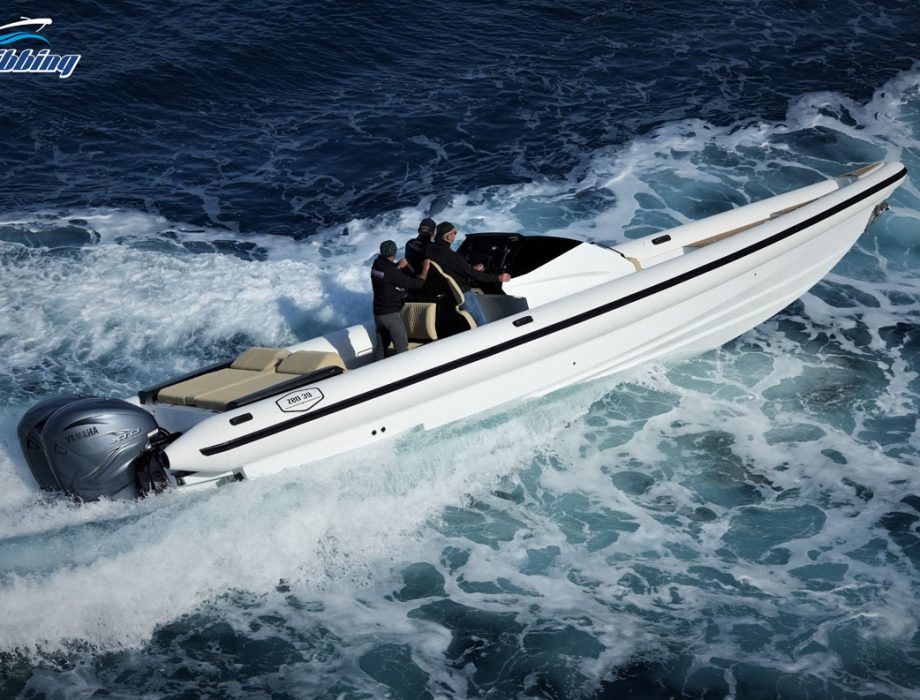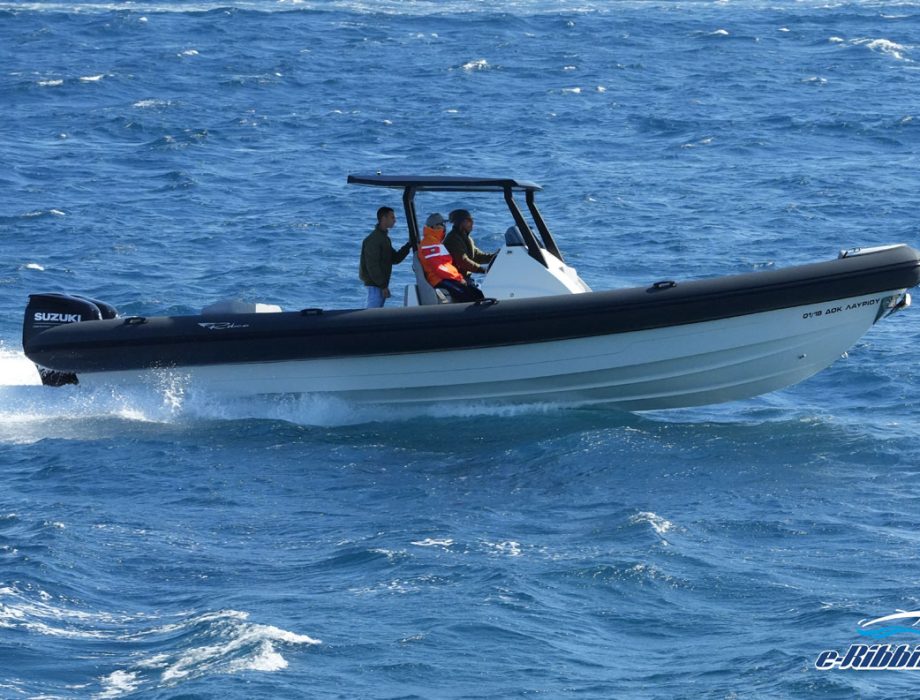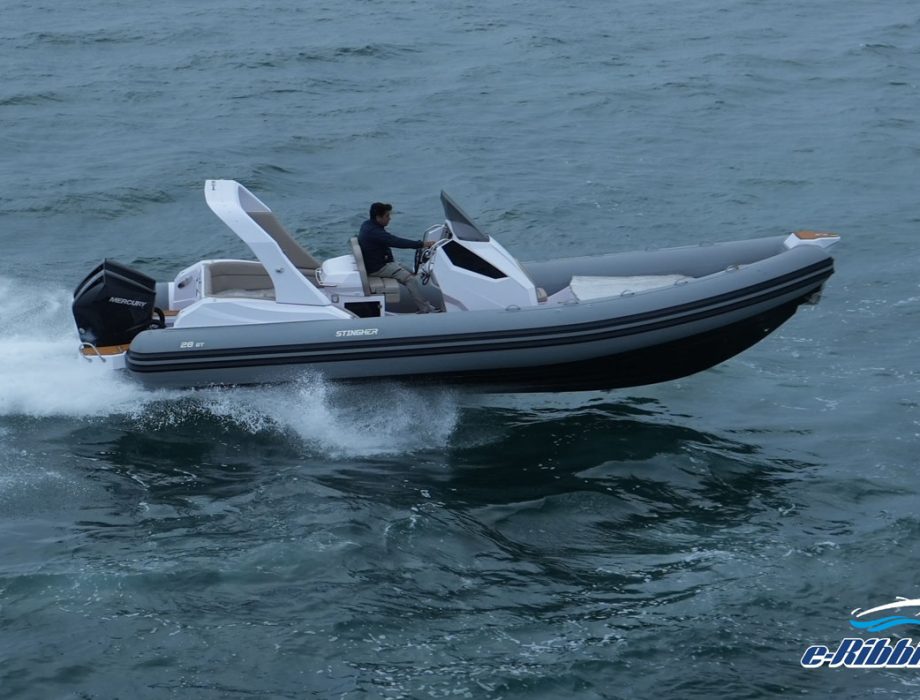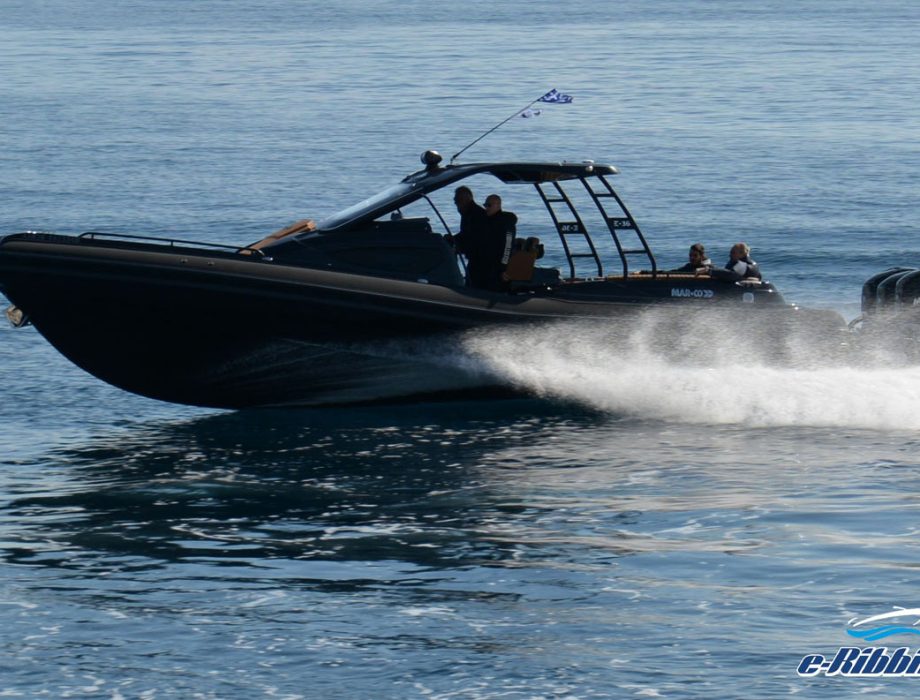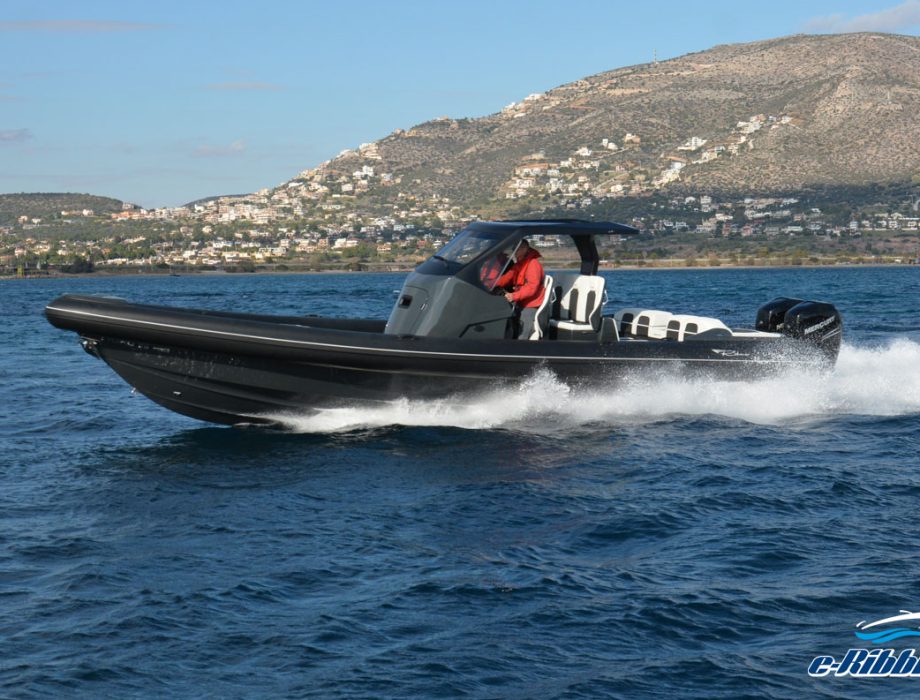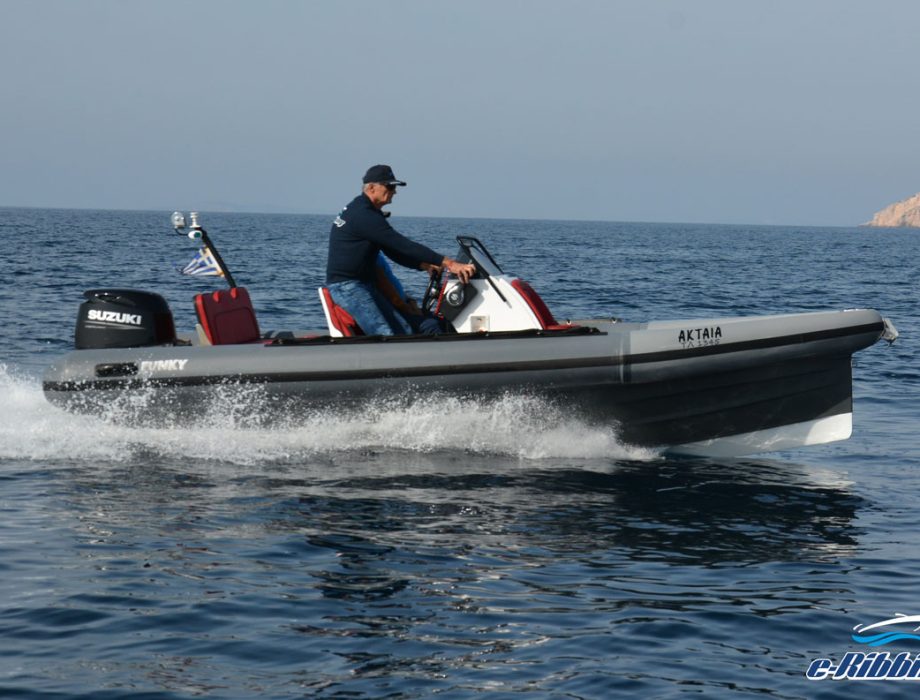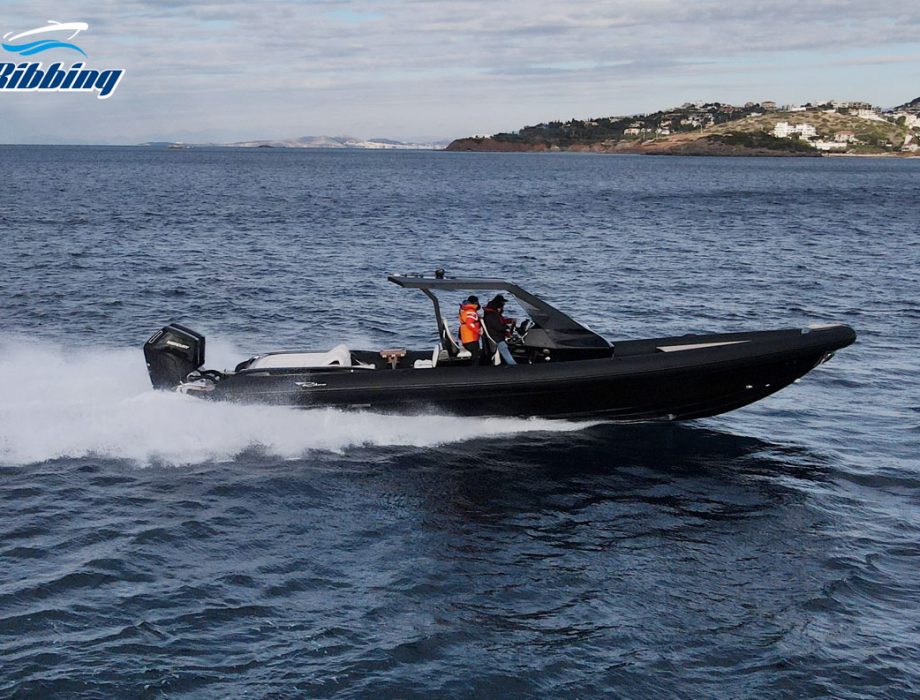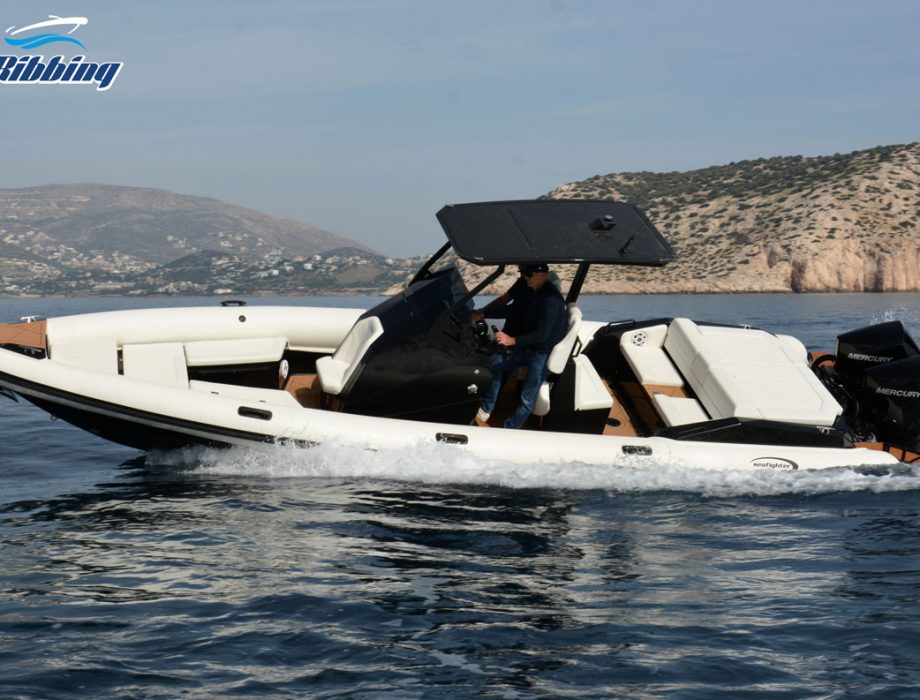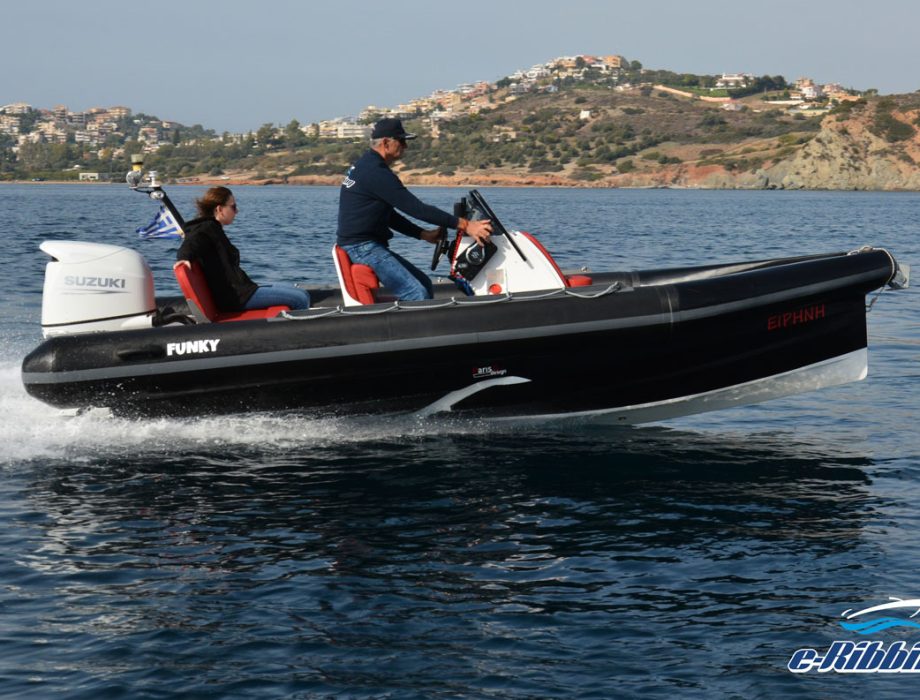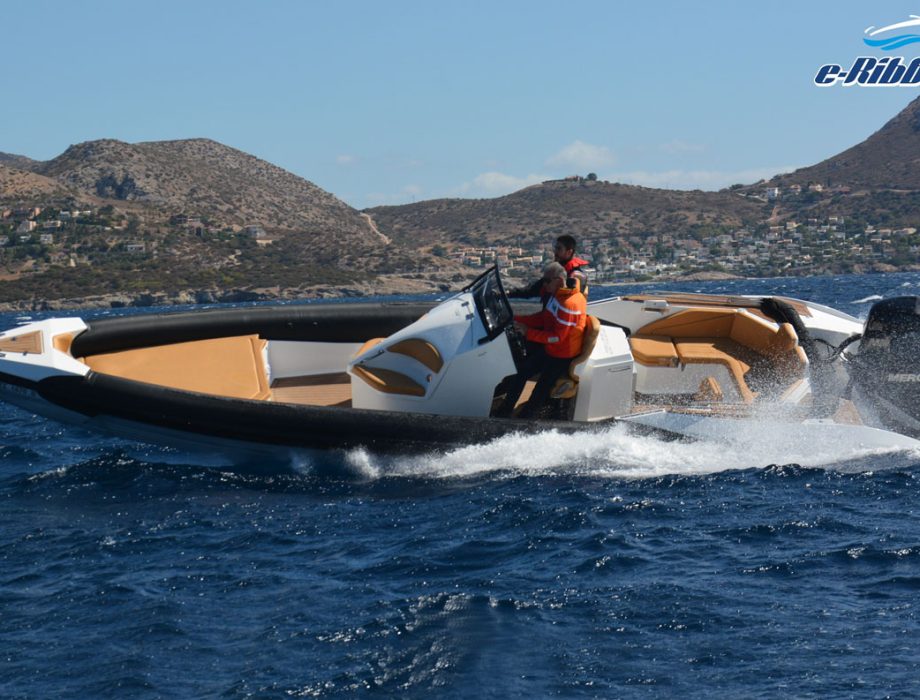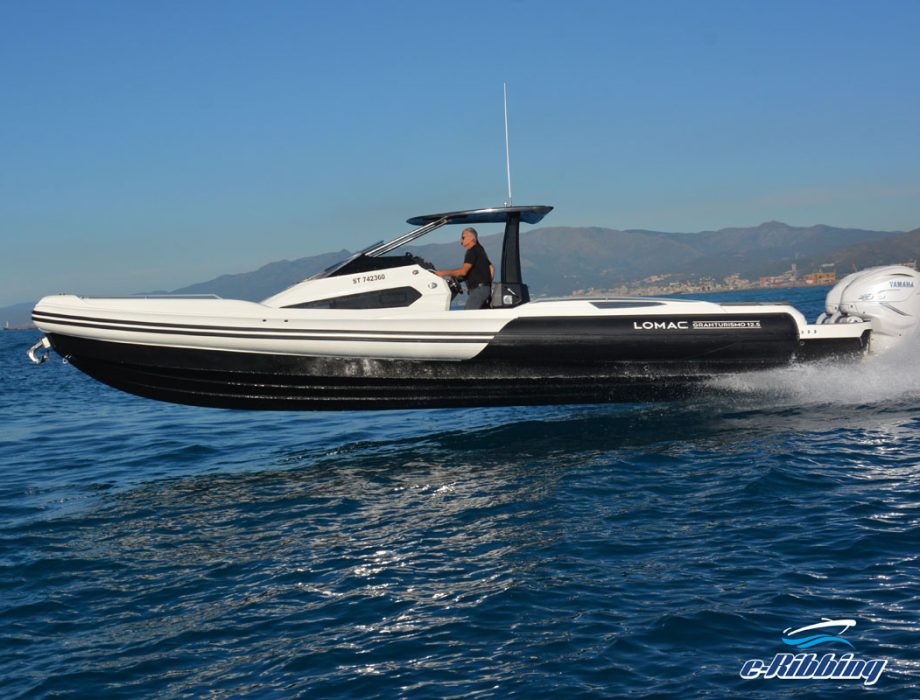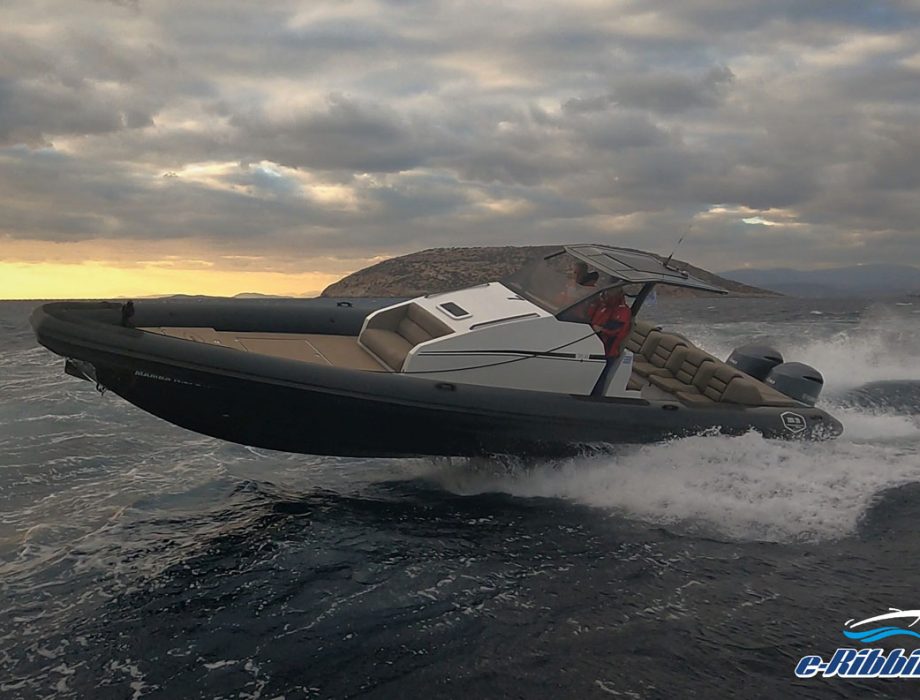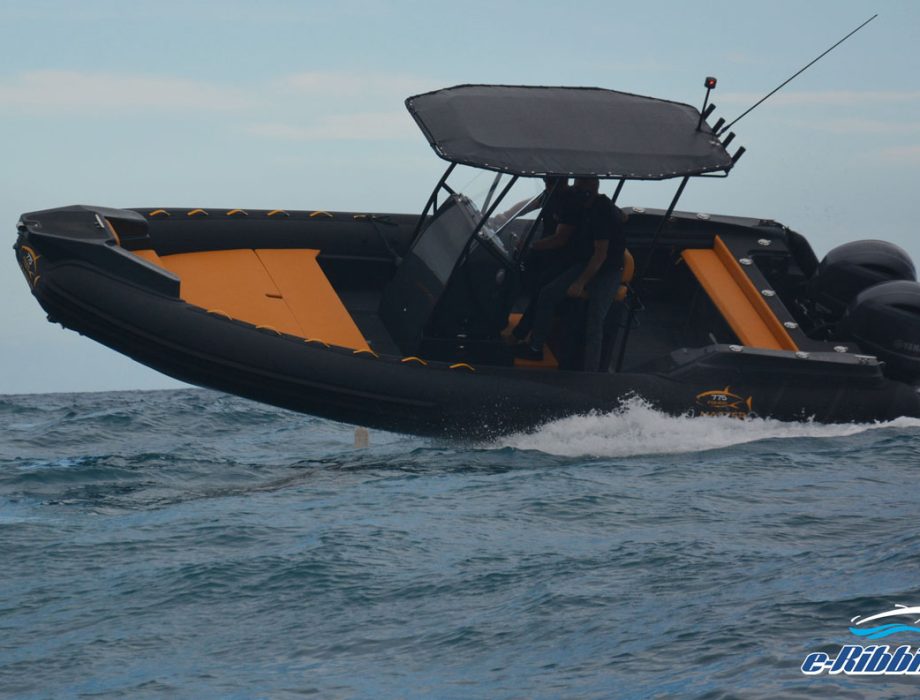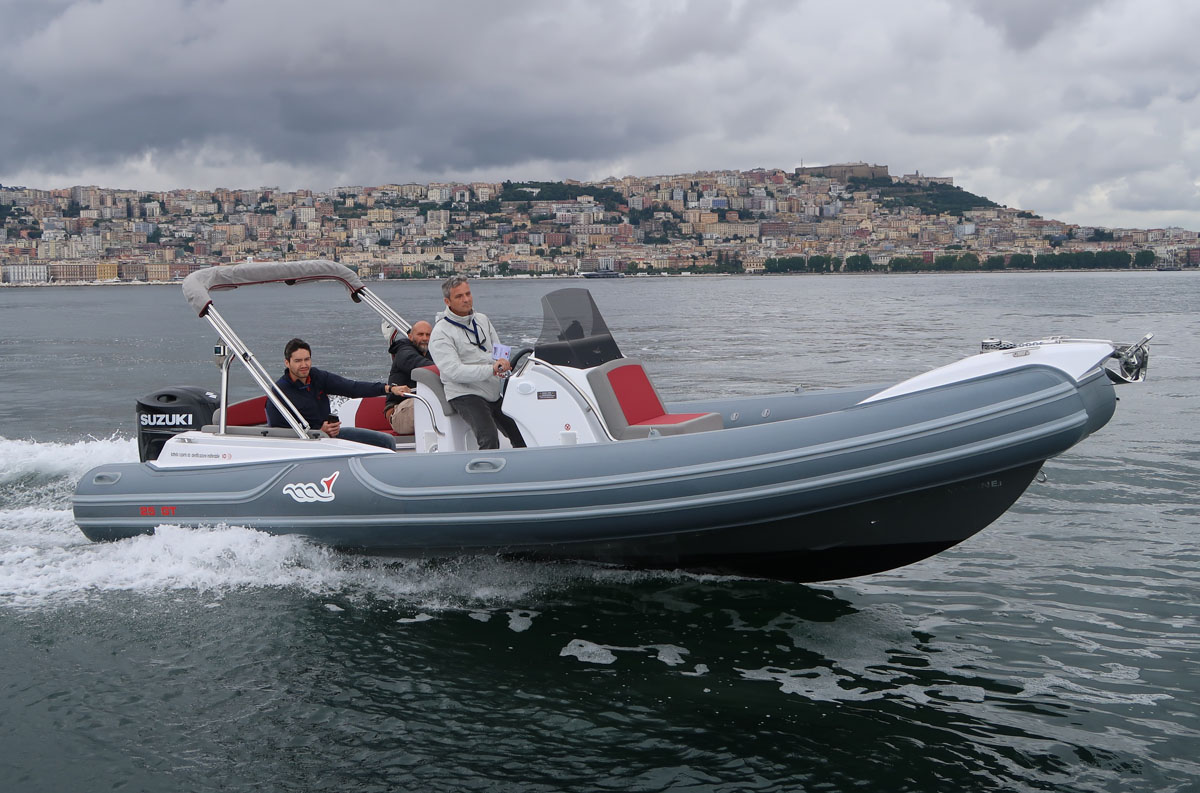
MV 25 GT – Suzuki DF 200AP
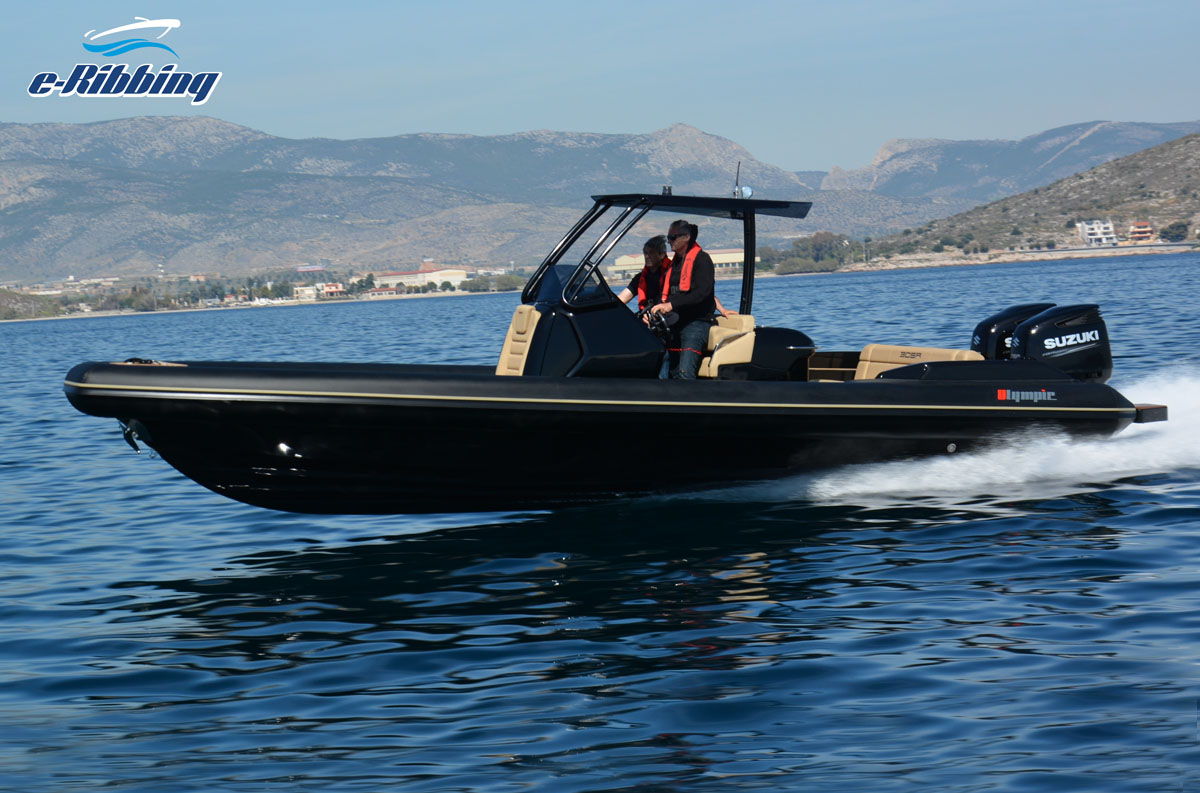
Olympic 30SR – Twin 250AP Suzuki

MV 25 GT – Suzuki DF 200AP

Olympic 30SR – Twin 250AP Suzuki
Stingher 606 XS – Mercury 150hp 4-stroke
For more than 30 years of experience in designing and manufacturing inflatable boats, the Italboats yard continues its upward course in the pursuit of perfection.
By constantly improving the geometry of its hulls while upgrading deck design, the Italboats yard aims to improve the quality of navigation combined with comfortable living on board.
Our 6-meter test model showed us very good stability and behavior arising from the design of its hull which adopts English shipbuilding lines, while the unquestionable talent of Italians in deck designing guarantees a pleasant and comfortable stay on board.
The hull of the Stingher 606 XS is characterized by the presence of two slightly negative spray rails that start from the dihedral edge of the bow and end up to the transom where their width reaches 9 cm.
The chine has a maximum height of 14 cm in the area of the bow and gradually decreases to 4 cm in the area of the stern, while the dihedral ends in pure acne, without pad configuration to the aft section of the bottom.
The deadrise angle at the transom is relatively low and shows the yard orientation for this particular hull which is nothing more than achieving greater stern lift and creating more space on the deck.
On deck
Stingher 606 XS is definitely an ideal Rib for family day trips, giving us the opportunity to overnight on board if we belong to the category of nautical camping lovers.
The fiberglass nose of the bow, which is applied onto the tubes, is wide enough to provide a comfortable footing for our entry or exit from the boat. Directly behind and below the hard nose we find the anchor’s locker, whose depth provides us with plenty of space, not only for the anchor, the chain and the ropes but also for the placement of several fenders inside.
The bow sundeck has a maximum width of 1.30 meters in the feet area, a minimum width of 0.59 meters in the head area and stretches 1.44 meters in length. With the 36cm extension that reaches the front seat of the console, it creates a large berth that exceeds 2 meters in length and accommodates two adults comfortably.
Underneath the bow sundeck there is a massive and single trapezoidal locker that is the largest and most easily accessible storage space of the rib. 28cm behind, there is a single seat integrated with the console, with enough of storage space underneath for the placement of all necessary lifejackets.
The Rib's console is centrally located and follows the classical design philosophy of the yard, being narrower at its base so as to leave comfortable passageways to its port and starboard reaching 36 cm wide each one.
The steering wheel is positioned to the port at a very good height so that we can drive effortlessly and comfortably whether we are standing or sitting. The engine control is located in the center and in a special recess in the console, while on the starboard there is a small glove box which will be very useful for placing small objects.
The helm seat, which is convexly shaped to serve the semi-steady driving position, lifts up and reveals a deep and useful storage space underneath. Of course, it does not provide lateral support while it is very difficult for a driver and a co-driver to co-exist and the reason is to keep comfortable passageways right and left of the seat.
The internal width of the deck in the stern area reaches 1.45 meters, while the width of the three-seater sofa reaches 1.50 meters, on which 3 adults can comfortably seat. With the additional extensions between the driver's seat and the aft sofa, it creates a beautiful and comfortable sunbathing area that can also be used as a berth for our young children.
The elegant roll bar sits on the right and left of the aft sofa, outside of which wide gunwales are formed, allowing us to move to the engine area comfortably.
The engine is located between two polyester platforms which are based on the boat’s transom. On the starboard platform, there is the proper space to install our small auxiliary engine, while on the port one, in a specially designed area, the ladder is located so invisibly without constituting an obstacle or an object of possible injury during our access to the boat.
At sea
On the transom of Stingher 606 XS, the Mercury 4-cylinder 150hp engine was hung whose large displacement allows it to effortlessly generate more power, leading among other things to its greater durability and longevity.
Mercury's 4-stroke 150hp engine boasts that holds not only the title of the largest displacement engine of any other 150hp four-stroke outboard on the market, but also the clear weight advantage, being 11kg lighter than its closest competitor. Moreover it features the fastest lower unit in its class, finding thus an ideal application on lighter or stepped vessels whose main goal is to achieve the highest possible top speed as well as to get on plane and accelerate faster.
Having a 14 ½΄΄ x 19΄΄ Black Max 3-blade propeller on the engine propshaft, which was turning with a 1.92: 1 gear ratio, I pushed the throttle relatively sharply forward to get a first sense of the engine’s power in relation to the propeller and hull response of the overall 6.15 meters long Rib.
After a few seconds of inactivity and intense rising of the bow, the Rib jumped effortlessly forward showing that I had in my hands a very powerful set-up concerning the engine-boat combination, while it wasn’t the same with the propeller.
With 100 liters of fuel, 3 people on board, and the necessary boat equipment, the Stingher 606 XS was standing on plane at 2800 rpm maintaining a speed of 15 knots.
The planning speed was very close to 5.5 seconds, while we accelerated from 0 to 30 knots in 11 seconds. These numbers left us unsatisfied and of course they were a result of the initial lack and high slippage that the Black Max propeller showed at the beginning. It was more than obvious that with a more suitable propeller we could significantly improve the hole shot and the acceleration of this particular boat-engine combination.
At 3000 rpm, where we recorded the most economical performance, we ran with 18.5 knots consuming 0.8 liters per nautical mile. At 3500 rpm, we were traveling at 24.5 knots burning 0.9 liters per nautical mile, while at 4000 knots we were riding at 27.5 knots with a fuel consumption of 0.96 liters per mile.
In these rpm, the Stingher 606 XS had shown us that it is capable of traveling very steadily and pleasantly, keeping the fuel consumption below 1 liter per nautical mile, enabling us to cover long distances with very good fuel economy.
At 4500 rpm, our speed reached 31.5 knots burning 1.1 liters per nautical mile.
At WOT, the Black Max propeller allowed the engine to “turn up” to its maximum rated rpm while the Rib reached 41 knots of top speed with a fuel consumption of 1.36 liters per mile.
You can see our detailed measurements in the table below:
The wind was rapidly increasing, indicating that it would quickly reach 5 beaufort. It was a first-class opportunity to evaluate the hull capabilities of the 606 XS in the specific conditions where the waves were impetuous and their crests exceeded half a meter.
I turned my bow against the waves, and held the throttle lever at 3500 rpm. The Rib was traveling at 23 knots, showing great stability and very good balance, as it was always landing with the edge of its keel without any effort of correction by the driver. The hull of the 606 XS cut the wave almost softly, maintaining a very good riding angle despite the low engine rpm.
Pushing the throttle forward, at 4200 rpm, we were running with 30 knots and the Rib was standing even higher on the water as the spray was breaking off the hull at the level slightly behind the helmseat, while the tubes were not involved in navigation at all.
At 30 knots, which of course is a very fast speed under the current conditions, the Rib was almost flying from wave to wave giving us a very good sense of robustness without any kind of disturbing bounces or vibrations.
It is worth noting that after 4000 rpm, we could not trim out the engine as much as we would like because the propeller lost its bite on the water very easily and its ventilation was becoming very perceptible.
In general, the 3-blade aluminum Black Max, which is a popular propeller, offers quite good performance in any condition.
In our test, however, its design features did not allow it to work as we were expecting, presenting:
- delay on startup and very long planning time
- unable to run near the surface of the water
- easily loss of biting on the water even when the engine was slightly trimmed out or even when trying modest turns
- a high slip percentage at WOT.
The numbers we recorded as well as the sense of ride quality we obtained, show us that there is plenty of room for improvement in this set-up, in the specific mounting height of the engine.
We could very well prefer a 3-blade stainless steel propeller with a slightly larger diameter, with more intense features, taller cupping and a higher rake angle.
In this way, we will improve the planning time, get stronger acceleration, improve the bite on the water, shift the crucial limit where ventilation phenomena begin to appear in higher trim angles, producing substantially more thrust and thus increase our top speed.
Such a propeller could be for example the Tempest plus one…
Manufacturer:
Italboats s.l.r.
Main factory & Head office
Zona Industriale SP 79 Presicce-Alessan0, 73054 Presicce (LE)
Italy
Tel: +39 (0)833 722 553
www.italboats.com




